There is a wealth of books published each year covering all aspects of space, astronomy, astrophysics and cosmology: books on practical stargazing and histories of spaceflight, astronomers addressing the latest burning cosmic questions and beginners' guides explaining the basic principles of our Solar System, Galaxy and Universe.
In each issue of BBC Sky at Night Magazine we pick the best astronomy and space books that have caught our eye that month and send them out to our expert reviewers for full scrutiny.
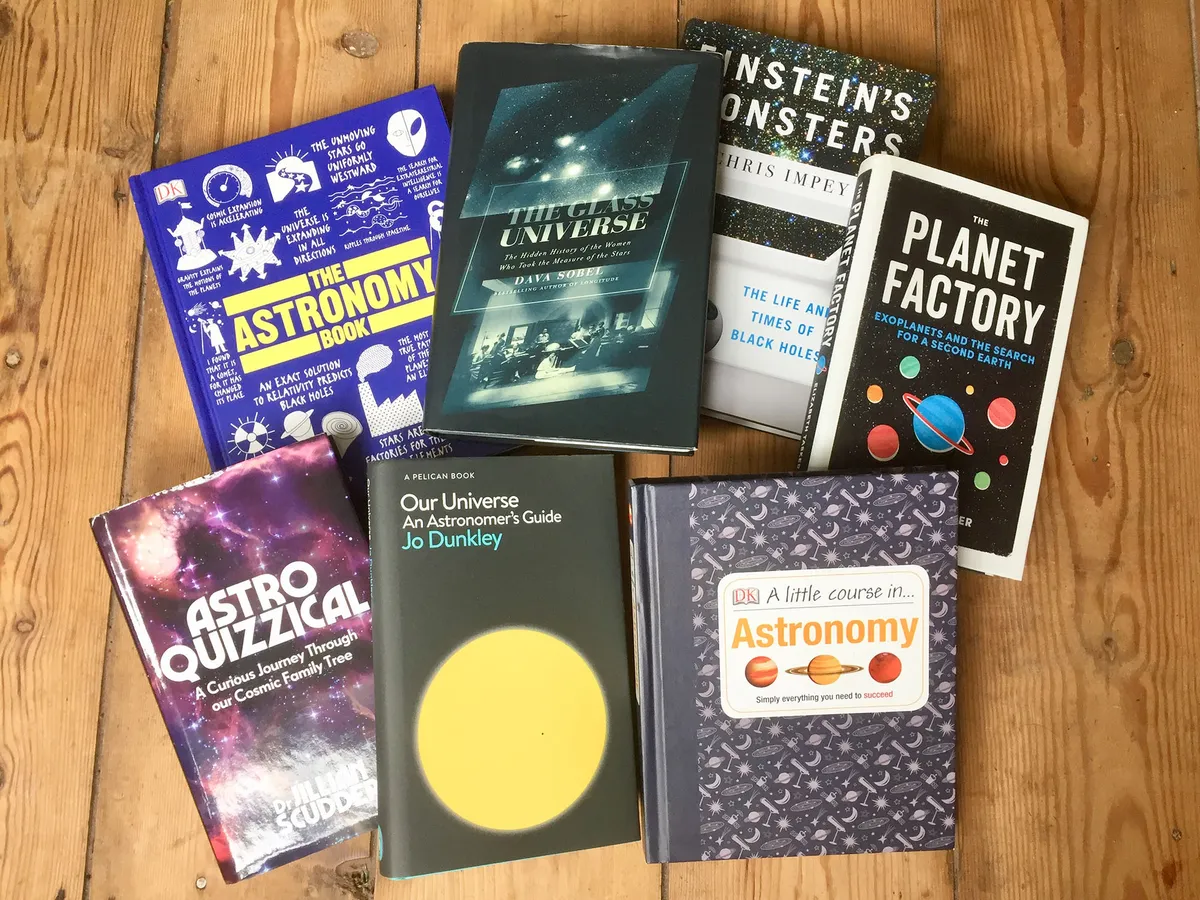
Here, in no particular order, is our pick of some of the top space and astronomy books. And if cinema is more your thing, read our guide to the best space movies of all time.
You might also like to take a look at our guide to the best space gifts.
Check with your local book shop to see if they have the following titles in store, and it's also a good idea to look in your local secondhand book shops or your local library.
If this is not possible, we've provided links to places where the books can be purchased online.
40 best space and astronomy books
Best books on practical astronomy
1
The Backyard Astronomer's Guide
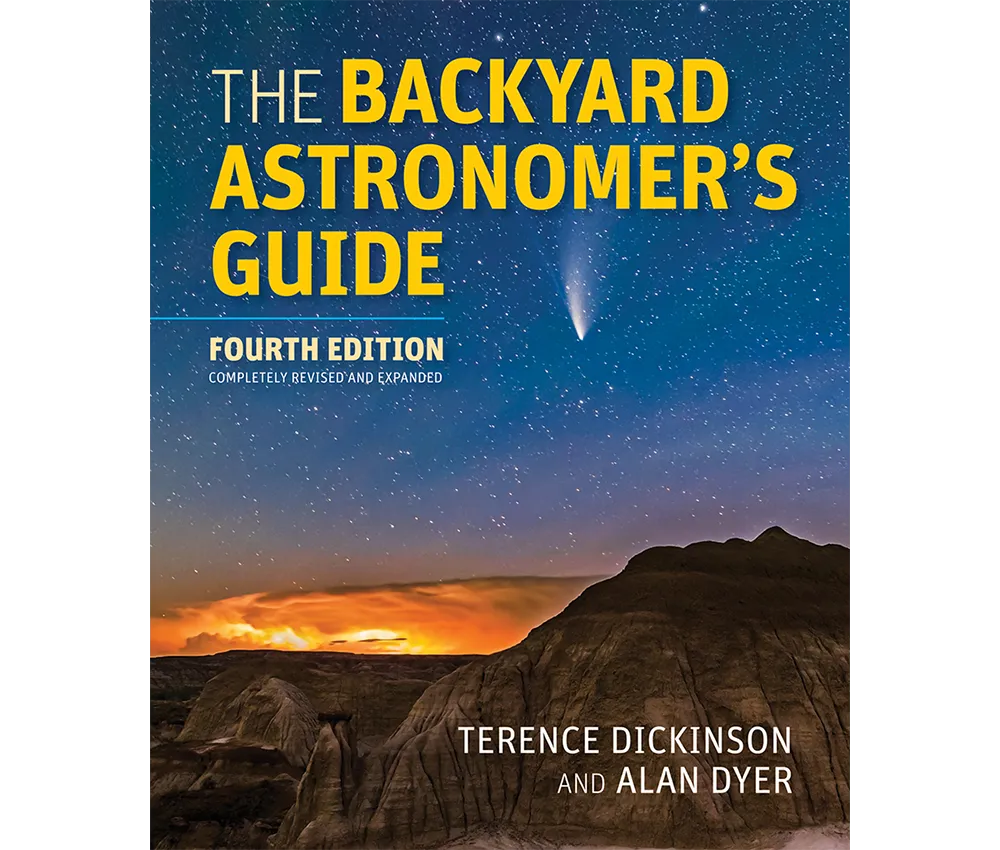
- Authors Terence Dickinson, Alan Dyer
- Publisher Firefly Books
Get excited – the fourth edition of The Backyard Astronomer’s Guide is here. First published in 1991, the 2021 edition boasts 48 additional pages and five new bang-up-to-date chapters. Beautifully put together by authors Terence Dickinson and Alan Dyer, the new edition firmly brings the book into the modern age of astronomy.
Spanning 416 pages and split into four parts, it covers how to get started, choosing and using a telescope, the telescopic Universe and capturing the cosmos. Within each part are chapters to wow and inspire and prove that you too can view the Milky Way, lunar eclipses, planets and constellations with just the naked eye.
There are some truly stunning images packed in to take your breath away and motivate you to get outside. Perhaps the most vital chapters are the guides on what binoculars to buy; plus choosing, buying and then using a telescope – an absolute must for those considering purchasing their first piece of optical equipment.
The guides explain everything from aperture, power and optical design to mounts and filters, each illustrated with handy photographs ensuring the reader knows the difference between a Newtonian and Maksutov telescope or an altazimuth and Go-To mount.
Among the pages are sky tours, star charts, future astronomical events and a fantastic short Moon tour by astronomy communicator Ken Hewitt-White.
The authors really help manage a beginner’s expectations, giving honest advice such as ‘leave astrophotography to the last’ – an important lesson that first-time astronomers often ignore.
This invaluable guide will appeal to anyone no matter their experience, the equipment they have (or not) or where they live.
Reviewer Katrin Raynor Evans is a fellow of the Royal Astronomical Society and the librarian for Cardiff Astronomical Society.
2
The Secret World of Stargazing
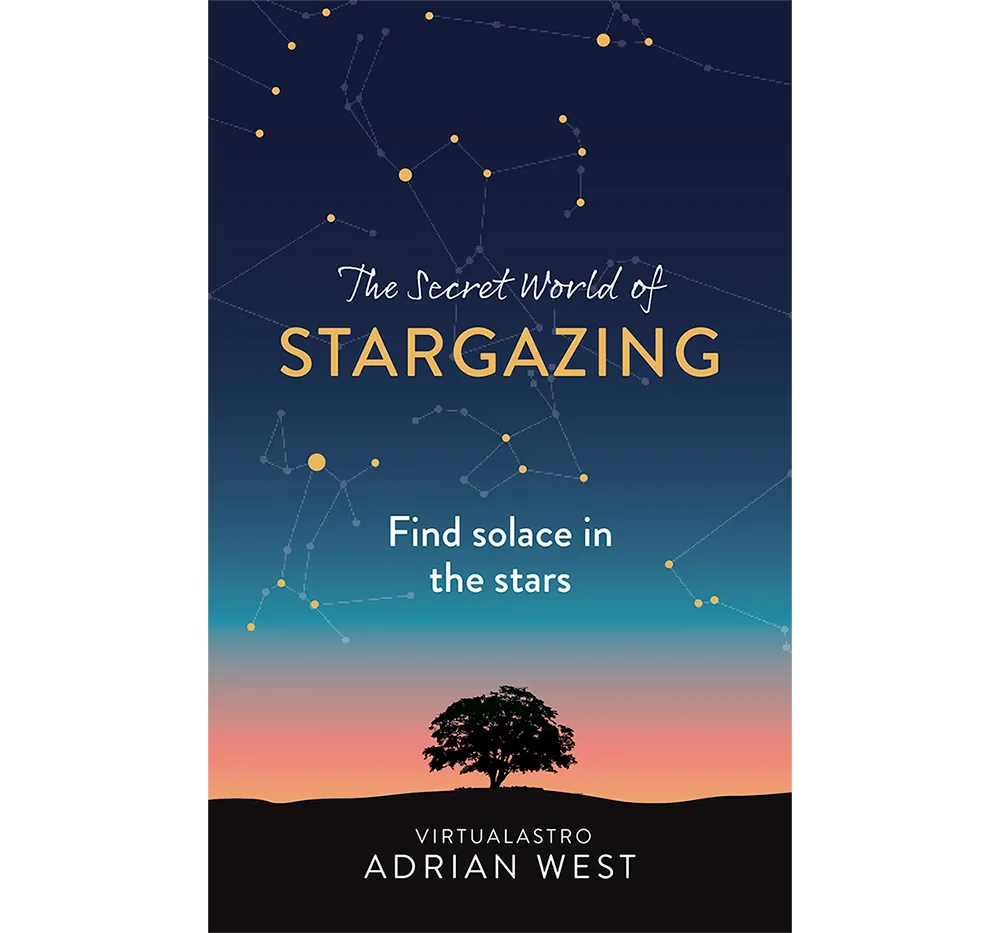
- Author Adrian West
- PublisherHodder & Stoughton
Adrian West has produced a charming book with a strong emphasis on wellbeing: how and why stargazing is good for us, physically and mentally. This is very much a book for anyone who is just starting out and finding their stargazing feet for the very first time, or anyone with a passing interest.
There is no jargon to confuse or put the novice off and West makes that very clear from the outset. He takes the beginner through the basics, from all-important advice about clothing and what each season has to offer, to Moon phases and meteor showers, asteroids and comets. Prominent, seasonal constellations to observe in both hemispheres are explained, all the while entwined with stories from mythology.
The Secret World of Stargazing is a lovely book. It is personal, delicate and beautifully innocent. For those more experienced astronomers, it is a reminder of why so many of us immerse ourselves in the hobby, and for those just starting out, it is a useful leg-up onto the first rung of the stargazing ladder.
ReviewerKatrin Raynor-Evans is a Fellow of the Royal Astronomical Society and an astronomy writer.
3
Moongazing
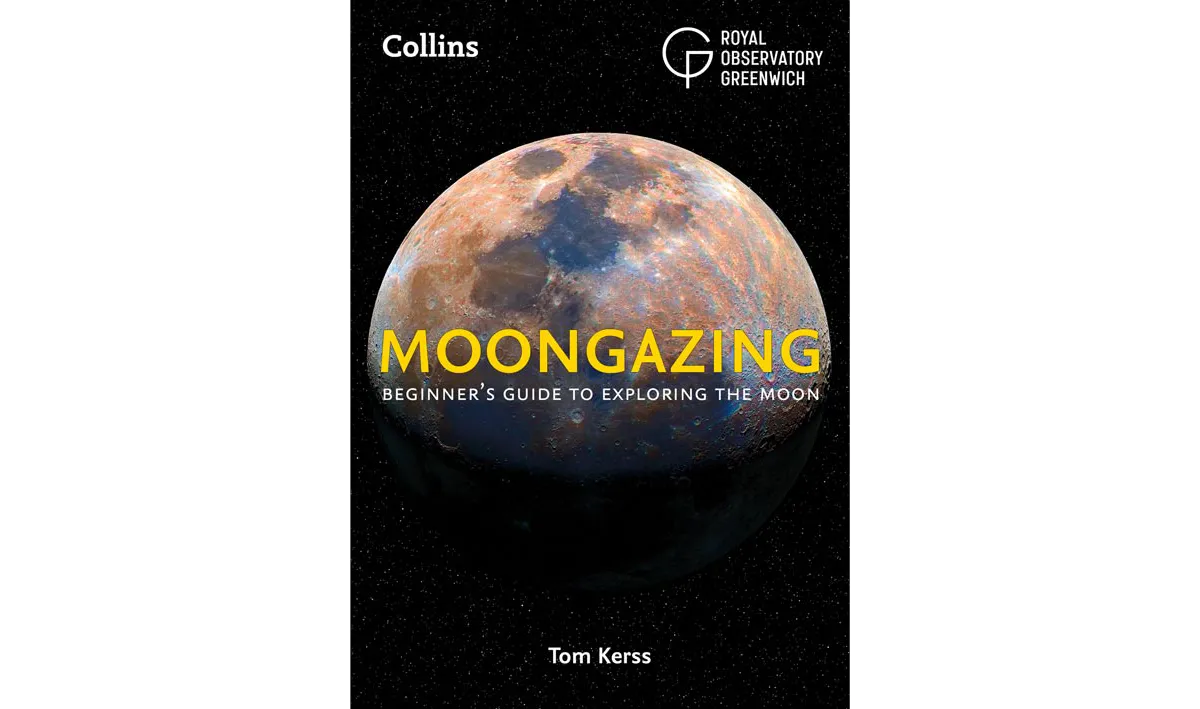
- Author Tom Kerss
- Publisher Collins
Kerss manages to cover a broad range of nitty-gritty lunar facts, ranging from the phases to the Apollo missions and a practical section on lunar photography using a smartphone or DSLR. The most exciting and informative segment is the ‘Introduction to the Lunar Atlas’, which divides the Moon into 16 sections and includes lunar photographs along with a map for the reader to learn the names of craters and mares. There is a two-page segment on the surface features and the categories they fall into, which ties in nicely with the maps and provides enough information for the observer to identify features on the Moon's surface. There is much to learn from this instructive and enthusing book, which will appeal to selenophiles everywhere.
4
The Ultimate Guide to Viewing the Cosmos
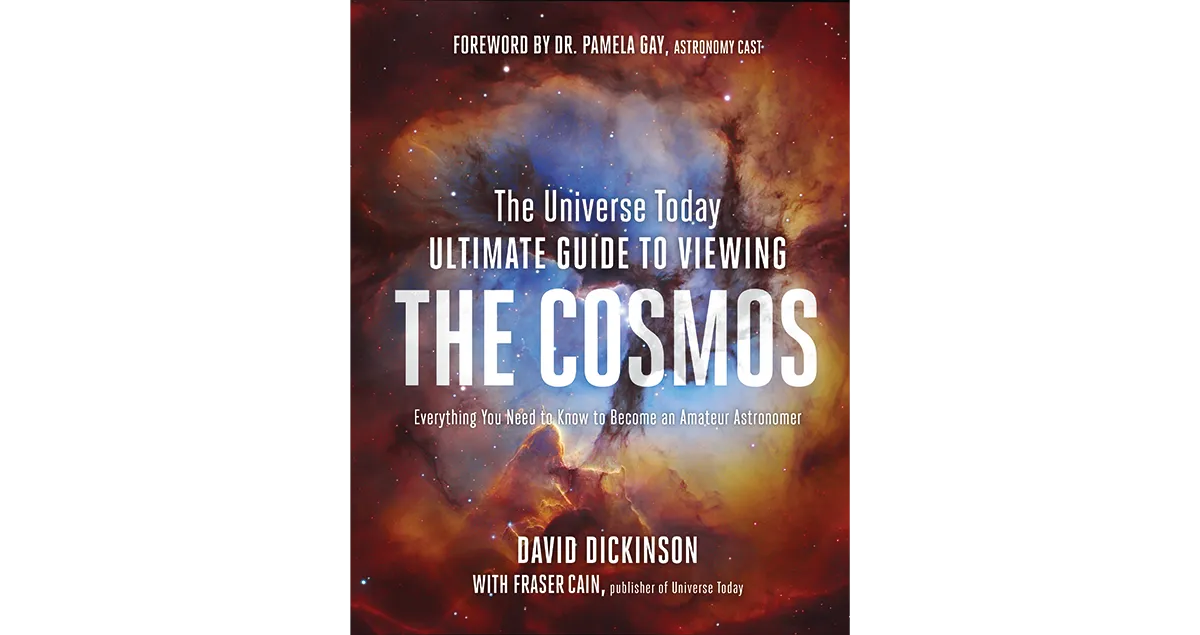
- AuthorsDavid Dickinson & Frazer Cain
- Publisher Page Street Publishing
Authors Dickinson and Cain are here to ease you into astronomy, providing a complex but highly readable guide for amateurs (or even veterans who need a refresher), introducing the night sky and the tools needed to observe it. They introduce us to stargazing, discuss software and equipment to aid our understanding, braving the minefield of choosing the right telescope, the right aperture, the right mount and the right eyepiece. They show us how to build a basic Newtonian refracting ‘scope for under $50. This is a companion for any astronomer at any level, but its main message is that we should not forget to simply revel in astronomy for the awe-inspiring experience that it is.
Reviewer Ben Evans is the author of several books on human spaceflight
5
Star Mentor
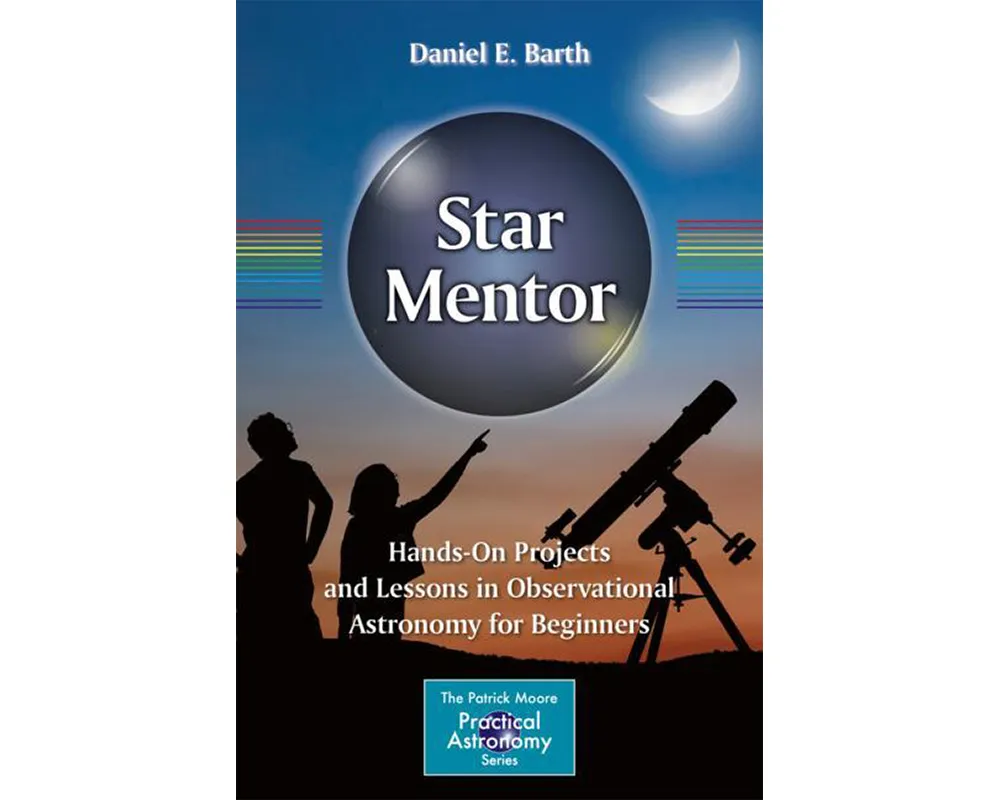
- Daniel E. Barth
- Springer
Star Mentor is packed with fantastic activities that can be used as teaching aids, all broken down into specific categories. Some of them involve the reader making models for themselves for demonstrations, but many of the projects are designed as group activities for the classroom or an outreach event, all using very low-cost and readily available materials. There are also in-depth astronomy observation and sketching activities and, finally, a beginner’s guide to telescopes and binoculars.
Each section begins with background information and facts, followed by detailed activity instructions. The sections then end with an opportunity to reflect on the learning outcomes and suggested follow-up activities. This book is a truly fantastic resource that will benefit every outreach astronomer, as well as any lone astronomers wanting to improve their observational skills.
Reviewer Mary McIntyre is an astronomy writer, speaker and educator.
Best books on cosmology and astrophysics
6
The Disordered Cosmos

- AuthorChanda Prescod-Weinstein
- Publisher Hachette
Dr Chanda Prescod-Weinstein’s debut book is two things: a journey into the world of cosmology and particle physics, and a refreshingly eye-opening insight into the too-often exclusionary arena that is science.
The book’s main premise is that physics doesn’t just affect us all as a society, but it taps into our natural desire to learn and understand; and yet one group for many centuries, and even to this day, has deemed itself worthy to tap into that knowledge above others.
It’s not often that physics is presented from the point of view of a black woman: in fact it’s so unusual that it’s a sad rarity. Do not pick up this book thinking it will be just another title on particle physics or dark matter. It does explore those areas in an engaging and accessible way, from the Standard Model of Particle Physics – its origins and where it currently stands – to the latest theories on dark matter, but
Dr Prescod-Weinstein’s experiences of navigating her way within the field of physics as a black woman – punctuated with many examples of racism and sexism – are interwoven throughout.
What I enjoyed most about this book was its raw honesty. I found its vibrant, bold and non-traditional take on the field of physics to be refreshing, saddening and frustrating to read at times – especially as a black woman myself – but very much needed. You may wonder what race has to do with physics, and the answer is everything, including why our skins are the colours they are (explained in captivating detail in the ‘Physics and Melanin’ chapter).
The popular science genre is in desperate need of new voices that aren’t the typical standard we are unwittingly used to, and as a starting point I cannot recommend this book enough.
ReviewerMelissa Brobby is a science communicator and social media lead at the Institute of Physics.
7
Light in the Darkness
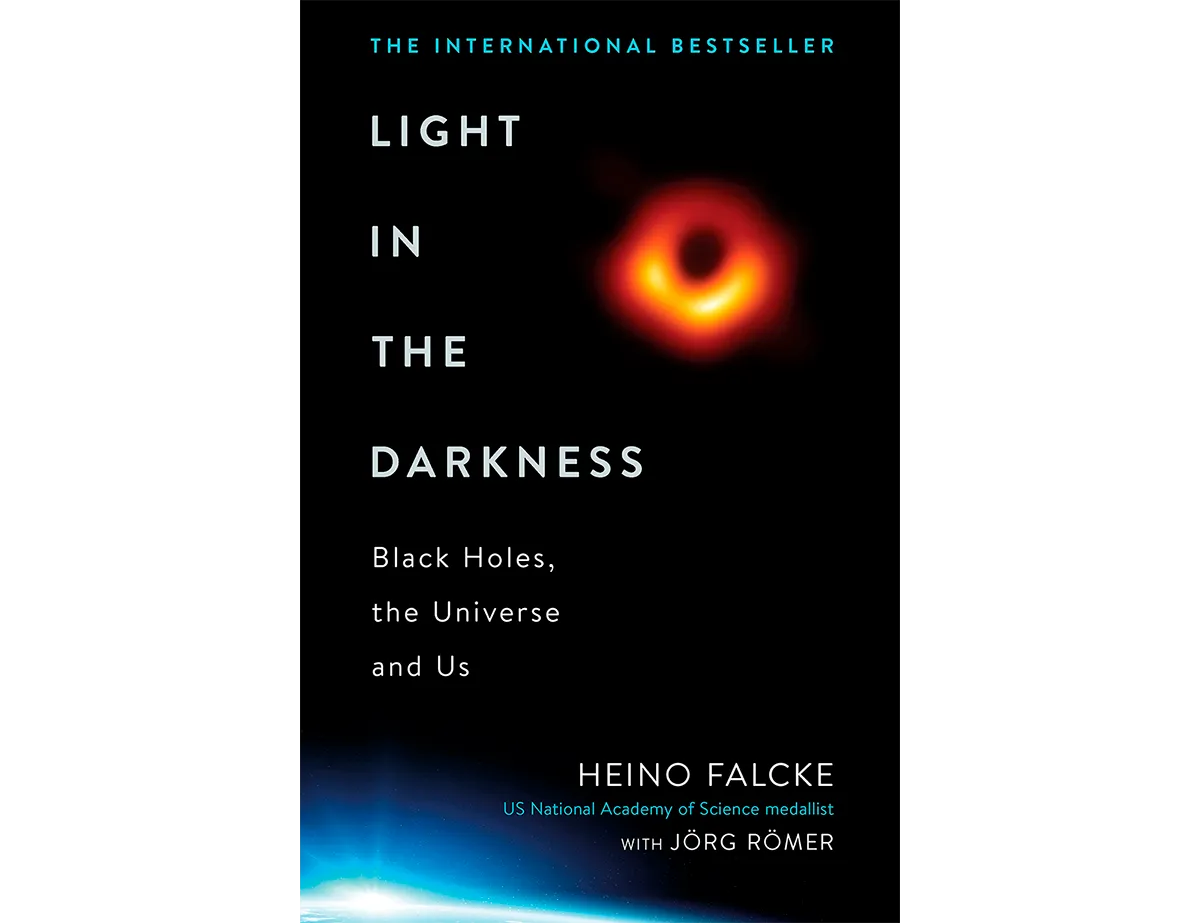
- Author Heino Falcke
- Publisher Wildfire
In 2019, an iconic photo graced the front pages of newspapers all over the world: a slightly asymmetric orange ring, surrounding a pitch-black centre. The first image of a black hole, some 55 million lightyears away, put us face to face with the ultimate cosmic mystery: a one-way abyss in spacetime that may hold the key to our deepest understanding of nature.
Heino Falcke – the first director and the science council chair of the Event Horizon Telescope, respectively tells the inside story of how astronomers succeeded in linking millimetre-wave telescopes into a virtual ‘eye’ as large as the planet – the Event Horizon Telescope.
By the time the famous image finally was presented to the world, on 10 April 2019, the excitement of the team was palpable. “We have seen the gates of hell at the end of space and time,” Falcke said at the press conference.
A large part of Light in the Darkness is a pretty basic introduction to the Universe and astronomy in general. This makes the book accessible to a wide audience, but astronomy buffs may have preferred Falcke to delve deeper into black hole physics and the convoluted history of the Event Horizon Telescope instead. Then again, it’s a great read, providing quite a lot of detail.
Reviewer Govert Schilling is an astronomy writer and author.
8
Brief Answers to the Big Questions

- Author Stephen Hawking
- Publisher John Murray
“How did it all begin? Is there other intelligent life in the Universe? Is time travel possible?” These are just a few of the big questions that Stephen Hawking discusses in his final book. Hawking does not simply give us one-word answers, but walks us through his own thinking and divergences on each subject. The language is easy to follow and each chapter’s length keeps you engaged. In places the book touches on some complicated physics, but you will never feel lost. There are many inspiring parts that will stay with you and shape the way you think about these big questions in the future.
Reviewer Laura Nuttall is a Senior Lecturer in Gravitational Waves at the Institute of Cosmology and Gravitation at the University of Portsmouth
9
Our Universe: An Astronomer’s Guide
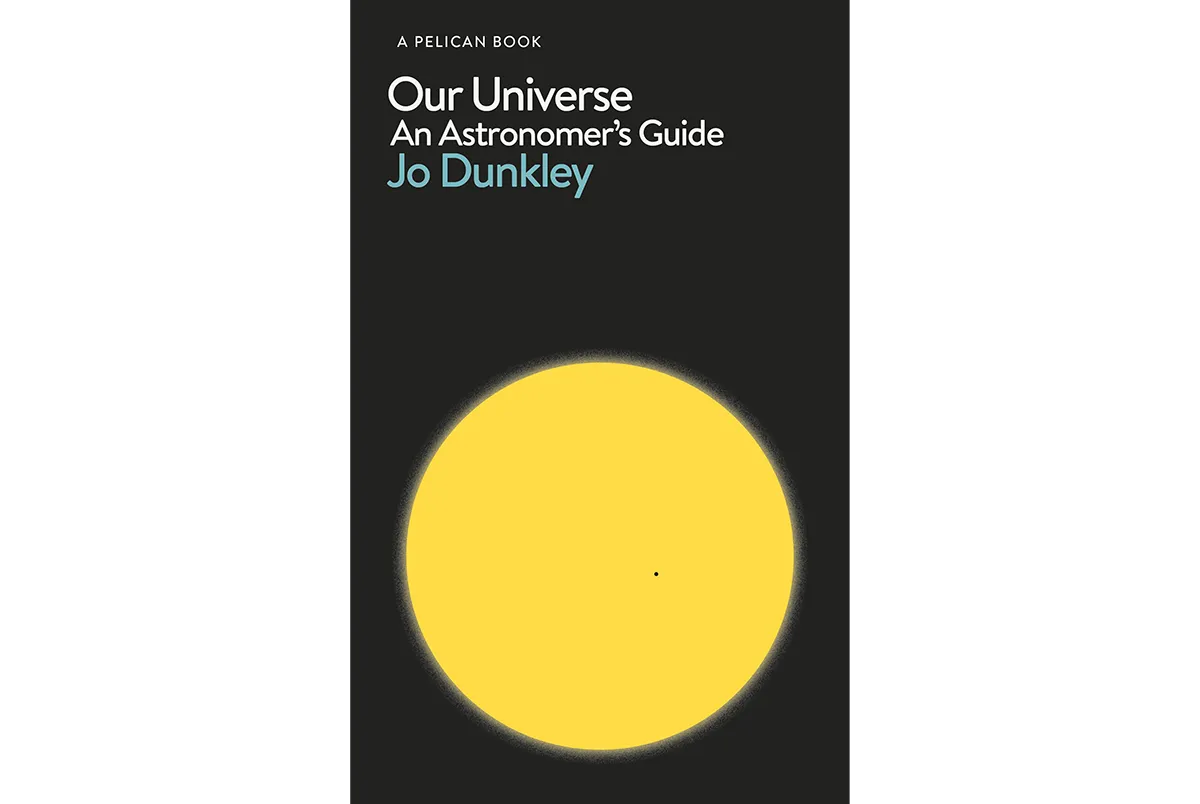
- Author Jo Dunkley
- Publisher Pelican
Dunkley takes her readers on a grand tour of space and time, from our nearest planetary neighbours to the edge of the observable Universe. The book follows a well-trodden path, starting with an overview of the history of astronomy and a description of our Solar System. Stellar evolution is next, followed by galaxies, clusters and the mystery of dark matter. The birth, evolution and future of the Universe are discussed in the final chapters. Explanations are always clear, metaphors are to the point and arguments easy to follow. If you feel like refreshing your background knowledge, or are looking for a present for your curious niece or nephew, this little gem certainly won’t disappoint.
Reviewer Govert Schilling is an astronomy writer and author of the book Ripples in Spacetime.
10
The End of Everything (Astrophysically Speaking)
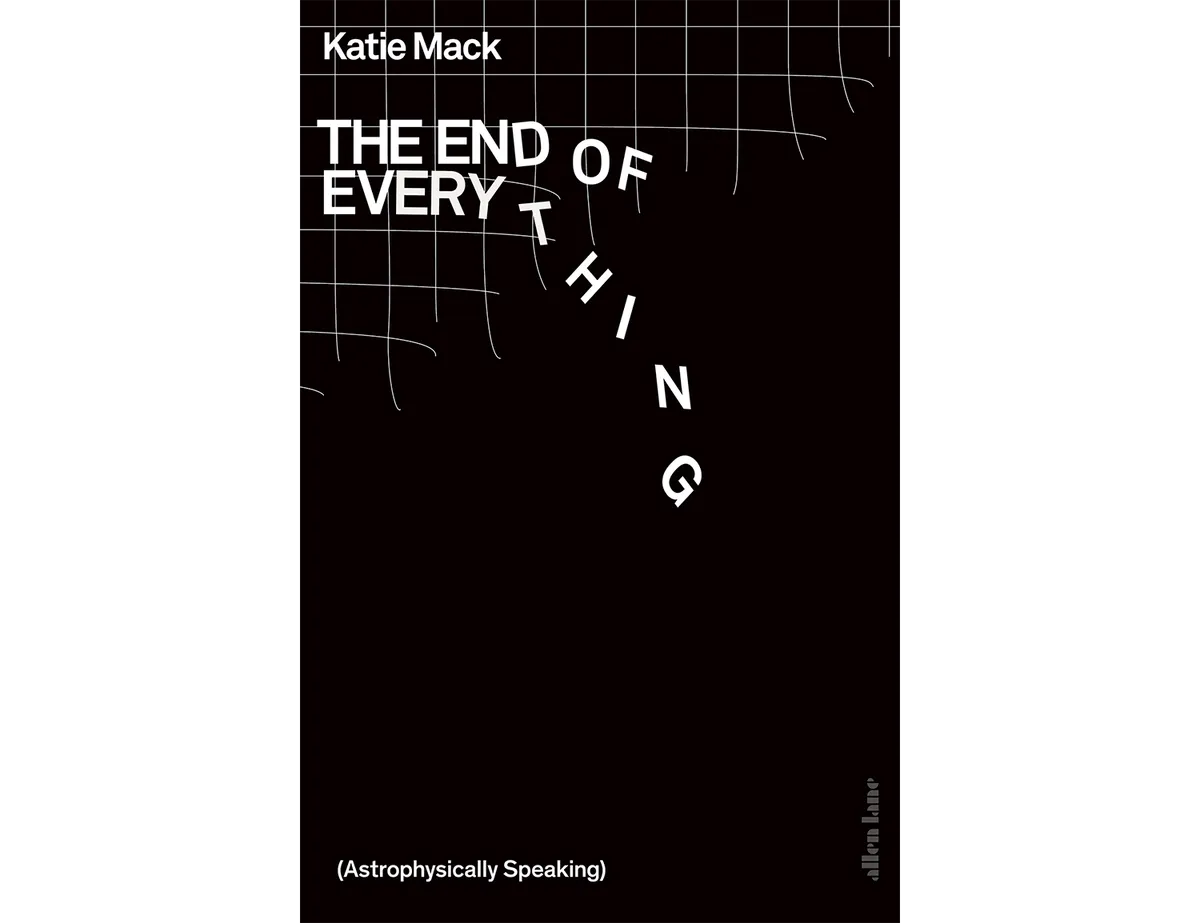
Author Katie MackPublisher Allen Lane
The End of Everything explores five possible scenarios for the Universe's ultimate demise: the ‘big crunch’, ‘heat death’, the ‘big rip’, ‘vacuum decay’ and the ‘ekpyrotic scenario’.Mack seamlessly weaves her way through the essential physics you’ll need to understand each Universe-ending possibility. Don’t worry if you haven’t heard of, say, the ekpyrotic scenario because the author gives us a readily graspable explanation of this and many other concepts.
I loved the slight tangents the author makes as though she is speaking out loud; these touches make the book feel very personable. My favourite might be how she explains a topological defect in the same way as deciding which bread plate is yours at a fancy dinner.The epilogue is another highlight, where various cosmologists contemplate the end of the Universe. It’s intriguing to read that while this subject is ‘sad’, it really is all about the journey.
I can’t remember coming across another book that solely focuses on the eventual destruction of all of reality. Mack is a great science communicator and I suspected I was going to like this book as soon as I saw her name; I am pleased to say it does not disappoint.
Reviewer Laura Nuttall is a senior lecturer in gravitational waves at the University of Portsmouth
11
The Crowd & the Cosmos

- Author Chris Lintott
- Publisher Oxford University Press
Over ten years ago, The Sky at Night's Chris Lintott started Galaxy Zoo, a citizen science project to classify galaxies. It was an instant success. At present, the Zooniverse encompasses over 70 science projects. In his entertaining book, Lintott describes the origin and evolution of the Zooniverse, with a focus on the astronomy projects, including discoveries like Hanny’s Voorwerp and Tabby’s Star. The real strength of the book is in the accessible description of astronomical research and future big-data facilities like the Large Synoptic Survey Telescope. Once you start reading, his book is hard to put down.
Reviewer Govert Schilling is an astronomy writer and author
12
Space: 10 Things You Should Know

- Author Dr Becky Smethurst
- Publisher Orion Publishing Co
Dr Becky Smethurst has a wonderful gift for communicating some extremely exciting but also tough astrophysics in 10 bite-sized essays. If you'd like to know about supermassive black holes, the hunt for exoplanets and the expanding Universe (plus a lot more), then this book is a nice starting point. I really enjoyed the conversational writing style and the divergences that come with this. It made me feel as though Dr Becky was sat next to me. My favourite chapter is the last, which touches on the importance of searching for the unknown knowns. There’s something wonderfully inspiring communicated through the pages, and I closed the book feeling a bit more excited about my own research.
ReviewerLaura Nuttall is a Senior Lecturer in Gravitational Waves in the Institute of Cosmology and Gravitation at the University of Portsmouth
13
Dark Matter & Dark Energy
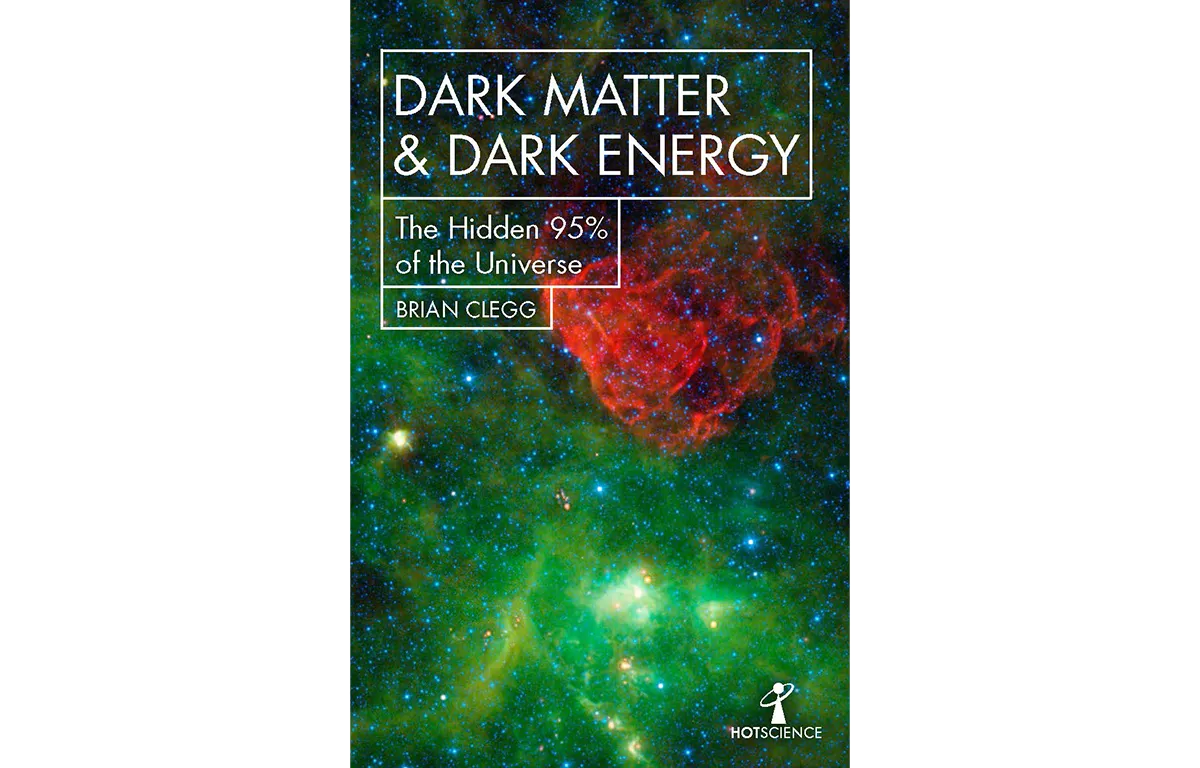
- Author Brian Clegg
- Publisher Icon Books
In the past few decades, it’s become clear that we have focussed on a mere 5% of the Universe – the rest remains almost entirely unknown. Astronomers divide this mysterious majority into two types of ‘stuff’: dark matter and dark energy. Brian Clegg’s book is a clear and compact look at the current state of knowledge about these twin cosmic mysteries. After an introductory account of the discovery of both phenomena, the first half of the book focuses on dark matter. The second half tackles dark energy, with some basic cosmological groundwork followed by a discussion of dark energy and what it could mean for the future of the cosmos. It’s hard to fault as a brief, easily digestible introduction to some of the biggest questions in the Universe.
Reviewer Giles Sparrow is a science writer and a fellow of the Royal Astronomical Society
14
The Invisible Universe
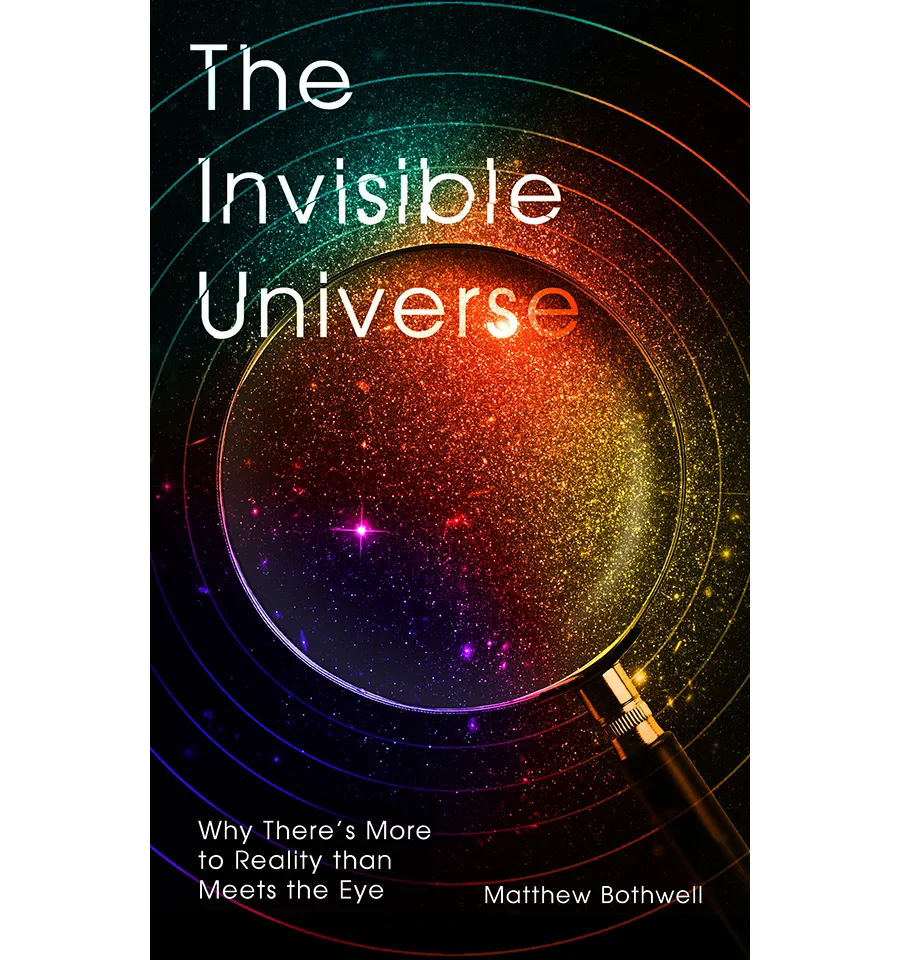
- Author Matthew Bothwell
- Publisher Oneworld
Astronomy is often thought of as a very visual field, with lots of focus on what we can see. In The Invisible Universe, Matthew Bothwell explores those bits that we can’t see – although that’s a little bit of a disservice as those ‘bits’ amount to the vast majority of the cosmos.
Most of the chapters focus on a particular part of the spectrum or a particular discovery. In every case there’s a narrative taking the reader through a potted history, including some very recent discoveries.
It doesn’t try to walk linearly along the spectrum or through a history of discoveries, as the journey of humanity’s discovery hasn’t worked like that. No book like this could avoid jumping around in history, but overall there’s a logical flow.
Throughout the book, concepts are well explained, using metaphors and analogies to create an accessible writing style. The author’s day job as an observational astronomer comes through, and there are nice anecdotes about trips to telescopes in Hawaii and Chile, and a few from his base at the University of Cambridge, an institution steeped in astronomical history.
An engaging read overall, this book will be of interest to anyone wanting to know more about how we’ve learned what we know about the Universe.
ReviewerChris North is Ogden Science Lecturer and STFC Public Engagement Fellow at Cardiff University
15
Time: 10 Things You Should Know
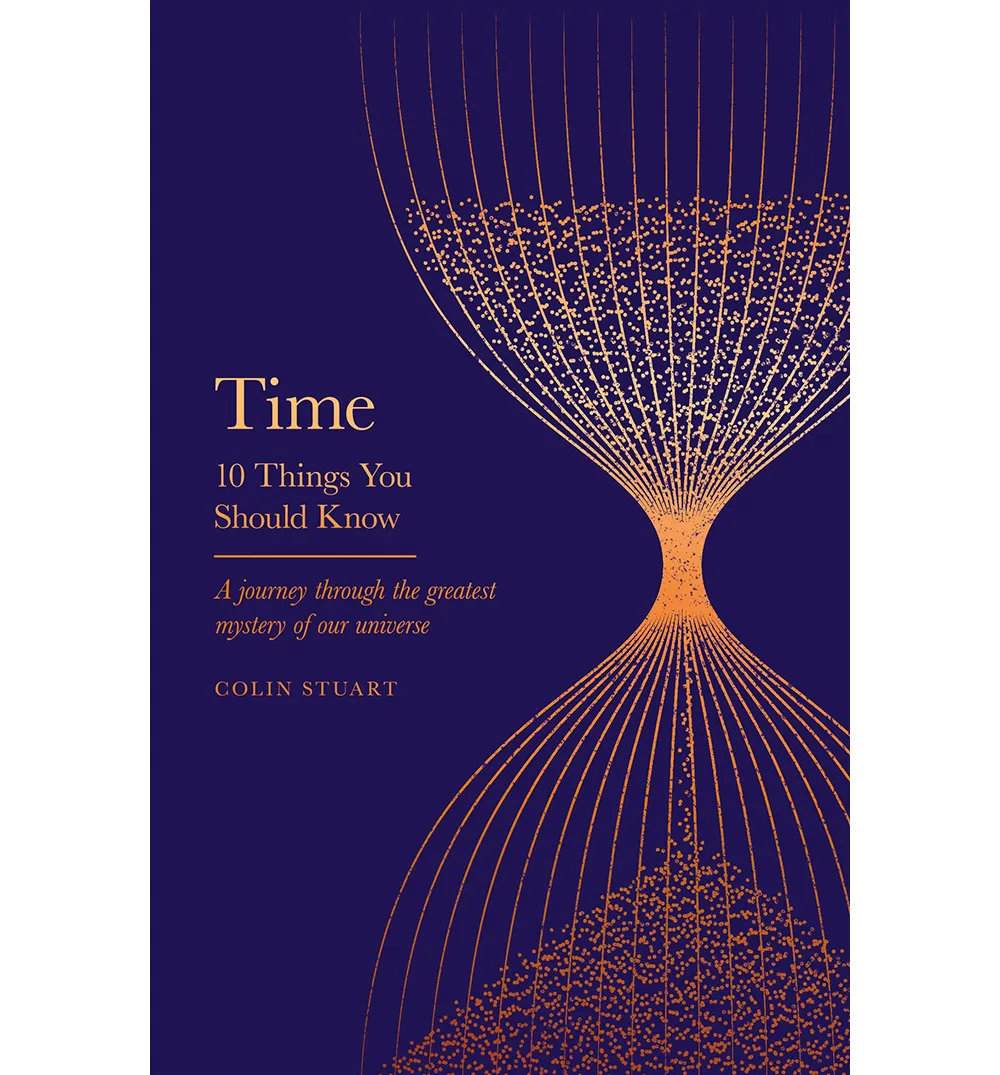
- Author Colin Stuart
- Publisher Seven Dials
For such a familiar concept, time is actually a rather complex topic. There are subtleties, such as how exactly
we measure it, but also debates as to what it even is in a physical sense. But it turns out that discovering more about the nature of time doesn’t have to take a lot of it. In Time: 10 Things You Should Know, you can cover a lot of ground in just 100 pages.
The book is made up of 10 essays, each 10 pages, covering a different aspect of time. To begin with, they’re fairly straightforward, starting with the definition of how we measure time – you’ve heard of leap years, but why on Earth do we need leap seconds? It moves on to other ways we mark and measure time, both here on Earth and with time-travelling telescopes.
The middle chapters cover the very nature of time and how we experience it, and it’s not long before you find yourself discussing the implications of general relativity. The later chapters of the book investigate how time can be manipulated and what that might mean.
Whether that means trying to slow time (or even stop it!) or travel through it (being careful not to kill your grandfather!), it can be quite philosophical at times.
The book is incredibly easy to read and very enjoyable. It’s full of little facts and turns of phrase that you can share with others. And with its slightly philosophical angle, it might even get you thinking about how you spend your time.
ReviewerChris North is Ogden Science Lecturer and STFC Public Engagement Fellow at Cardiff University
16
Simply Astronomy
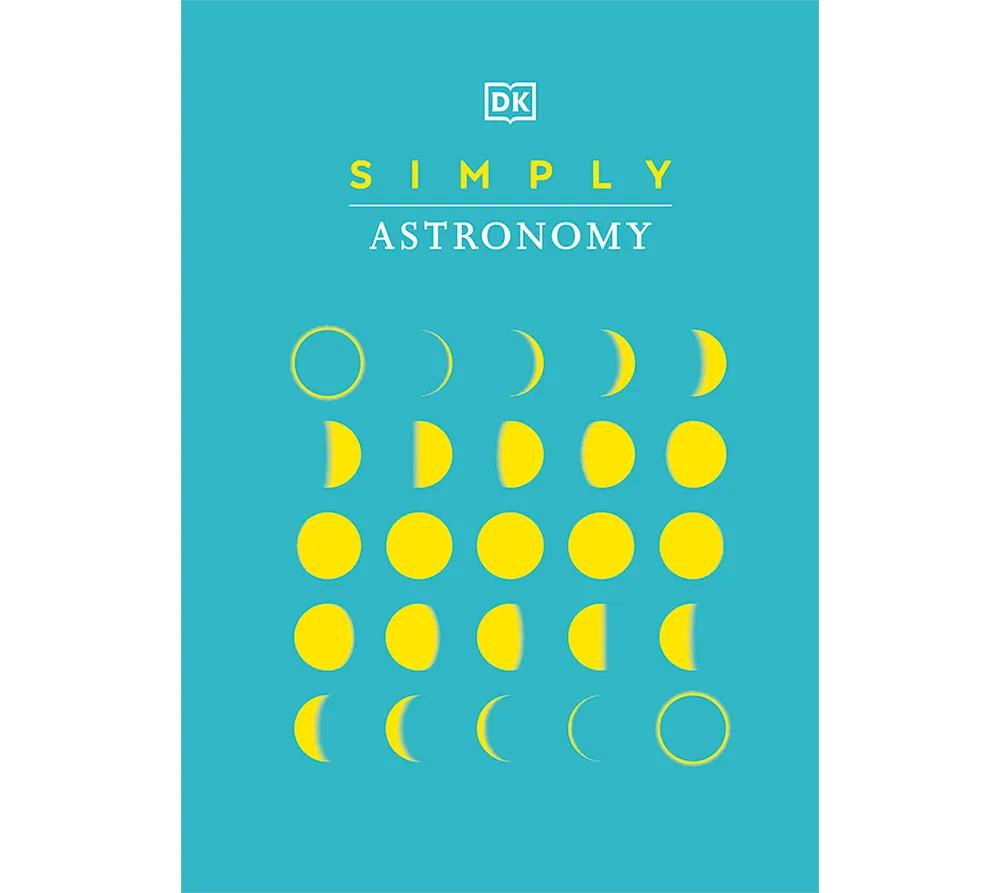
- Authors: Various
- Publisher: DK
Penned for Dorling Kindersley by an enthusiastic group of physicists, astronomers and science writers, this book's bite-sized chapters look in turn at the building blocks of the Universe we inhabit, our Solar System home, the stars, galaxies and constellations that we see when we crane our necks upward, and how we can play our own small part in understanding the cosmos.
What makes Simply Astronomy work is that the authors have cleverly kept their prose to a minimum – less really is more, after all – and allowed diagrams and easy to follow infographics to visually tell their story. Complex topics are condensed into chunks that are a couple of pages long at most, affording the reader just enough to pique the interest.
But despite its sparseness of language and indulgence of imagery, the book is accurate, comprehensive and impressively up to date. It packs a refreshingly sizeable punch for its diminutive size.
Reviewer Ben Evans is the author of several books on human spaceflight and is
a science and astronomy writer
17
The Cosmos Explained

- Author: Charles Liu
- Publisher: Quarto
Who would have thought learning about the evolution of the Universe could be so fun and straightforward?
It doesn’t sound possible when you’re tackling a subject as overarching as this, but Charles Liu has managed to turn complex scientific prose and mathematics into an accessible and beautifully presented retelling of its origins.
Navigating your way through the vast history of our Universe has been made easier thanks to this book’s more digestible format. Absent are the complex equations and jargon words, and in their place, an easy to read and very engaging gateway into the Universe’s evolution, which is broken up into sections that flow seamlessly into each other.
It may look like a short read, but The Cosmos Explained provides the perfect level of information without overloading the reader, making it easier to wrap your head around what is a multifaceted but deeply fascinating subject.
Whether you’re a budding cosmologist or simply someone with a deep fascination for the Universe and how it came to be, this book is a great introduction to the subject.
Reviewer: Melissa Brobby is a science communicator and Social Media Officer at the Institute of Physics.
18
Elephant In The Universe

- Author Govert Schilling
- Publisher Harvard University Press
The ‘elephant’ in this particular case is dark matter – the enigmatic constituent accounting for 85% of matter in the Universe. Rather than a dry, terse recounting of scientific fact, the author has chosen to play out the adventure of discovery with an emphasis on the characters of those involved.
Based on numerous interviews and discussions with scientists in the field, the book is both an advertisement for the thrill of scientific discovery and the visionaries who pursue the big questions simply because they are there. Schilling has craftily combined his lucid and accessible descriptions of science with the personal story of those unlocking the finer details of the missing mass mystery. The result is enthralling.
ReviewerAlastair Gunn is a radio astronomer based at Jodrell Bank, Cheshire.
Best books about spaceflight
19
Voyager
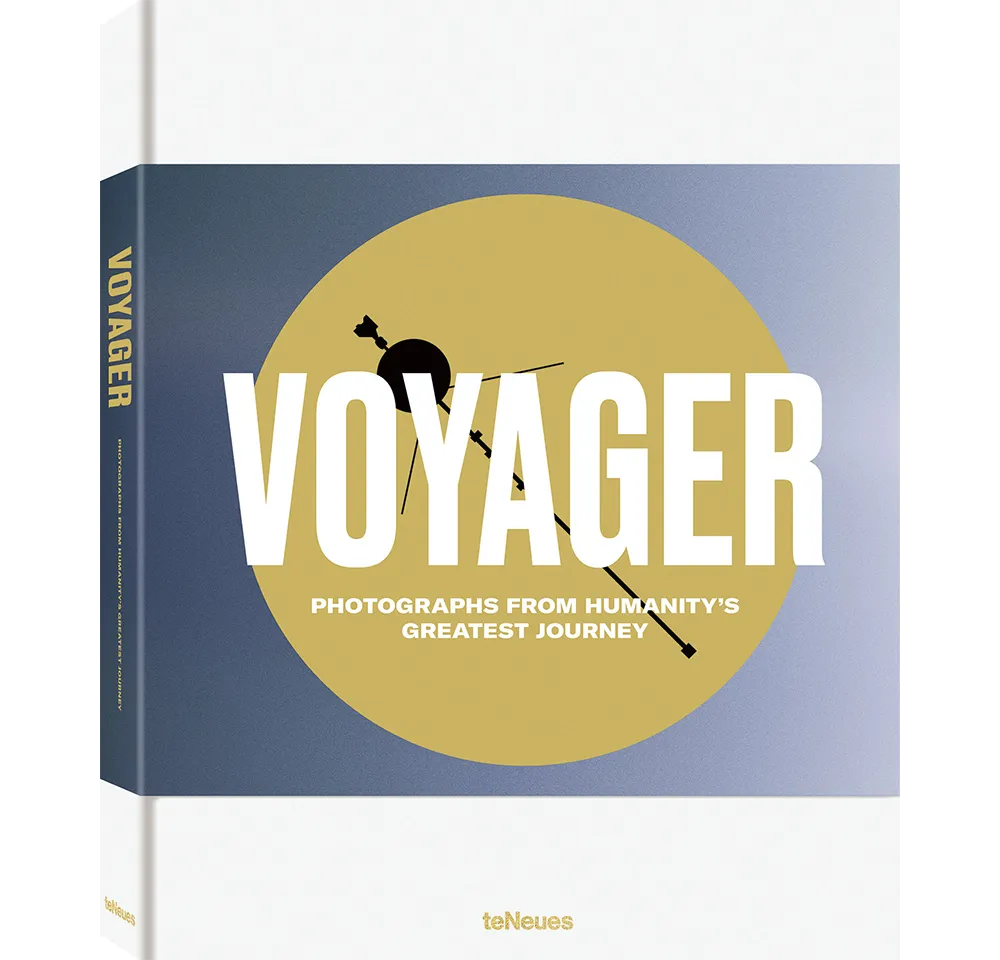
- Author Joel Meter et al
- Publisher teNeues
Put together by five seasoned photographers and prefaced by Voyager Imaging Team member Garry Hunt, this large-format volume will blow the socks off any interested coffee-table reader.The authors tell the history of Voyager, our first foray to all four giant planets – Jupiter, Saturn, Uranus and Neptune – which revealed their multitude of moons and rings, their atmospheres and magnetospheres, and the clues they may reveal about our origins.The real beauty of this book is its gorgeous assemblage of remastered photographs. There are pictures here that I have never seen before. And those I had seen were brought so wondrously and vividly to life that they left me open-mouthed in awe.
ReviewerBen Evans is the author of several books on human spaceflight and is a science and astronomy writer
20
Tim Peake: Limitless
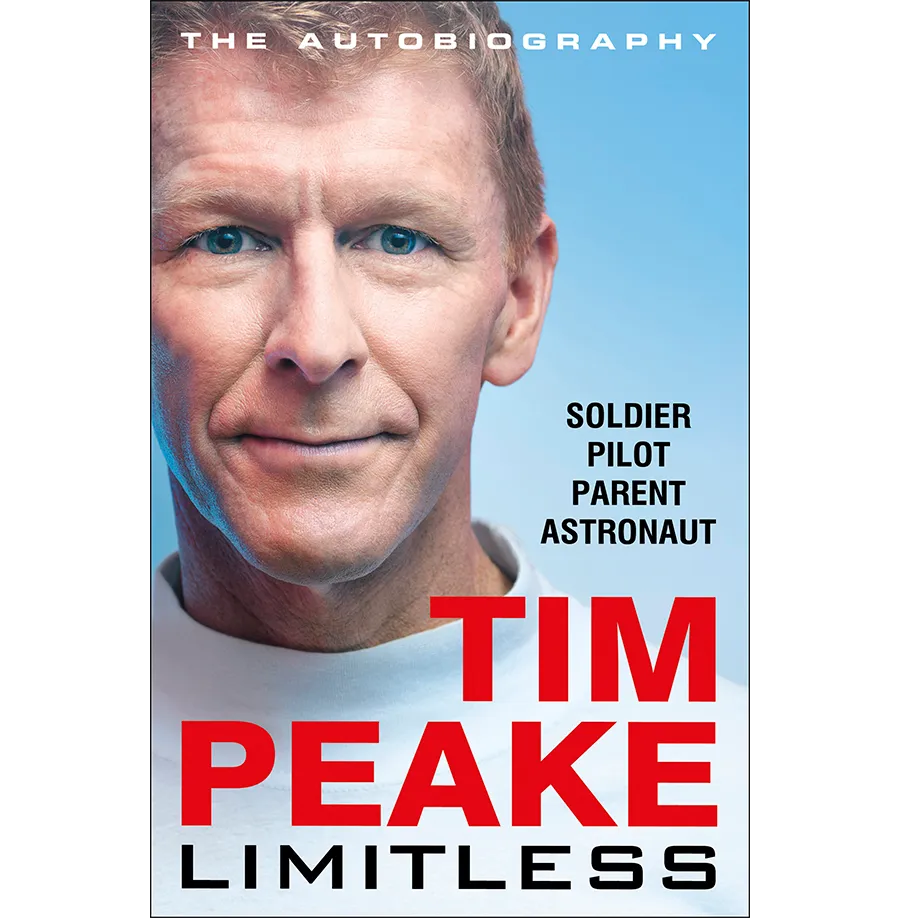
- Author Tim Peake
- Publisher Century
Peake takes us from his early experiences with homemade explosives through his days as a flair bartender, to the army and test pilot training, right up to touching down from space and being whisked away on a world tour. In between, he gives tips on how to crash-land in a helicopter, how to behave under interrogation, and how to best confront Jeremy Paxman. Some tales are definitely not for the squeamish, and it will certainly dissuade readers of any notion that astronauts lead a glamorous life.
When he comes to his brief time on the ISS, the book is somewhat underwhelming. One almost feels cheated that everythingwent so straightforwardly, with no terrible calamity, nor any need for the survival skills he honed in Sardinian caves.
But while the section on the Space Station may not be what we might expect, the book gives an incredible insight into the mind of an adrenaline junkie, test pilot, father and astronaut which many more than just spaceflight enthusiasts will enjoy.
Reviewer Katie Sawers is a student of physics and astronomy at the University of Glasgow.
21
Back to Earth
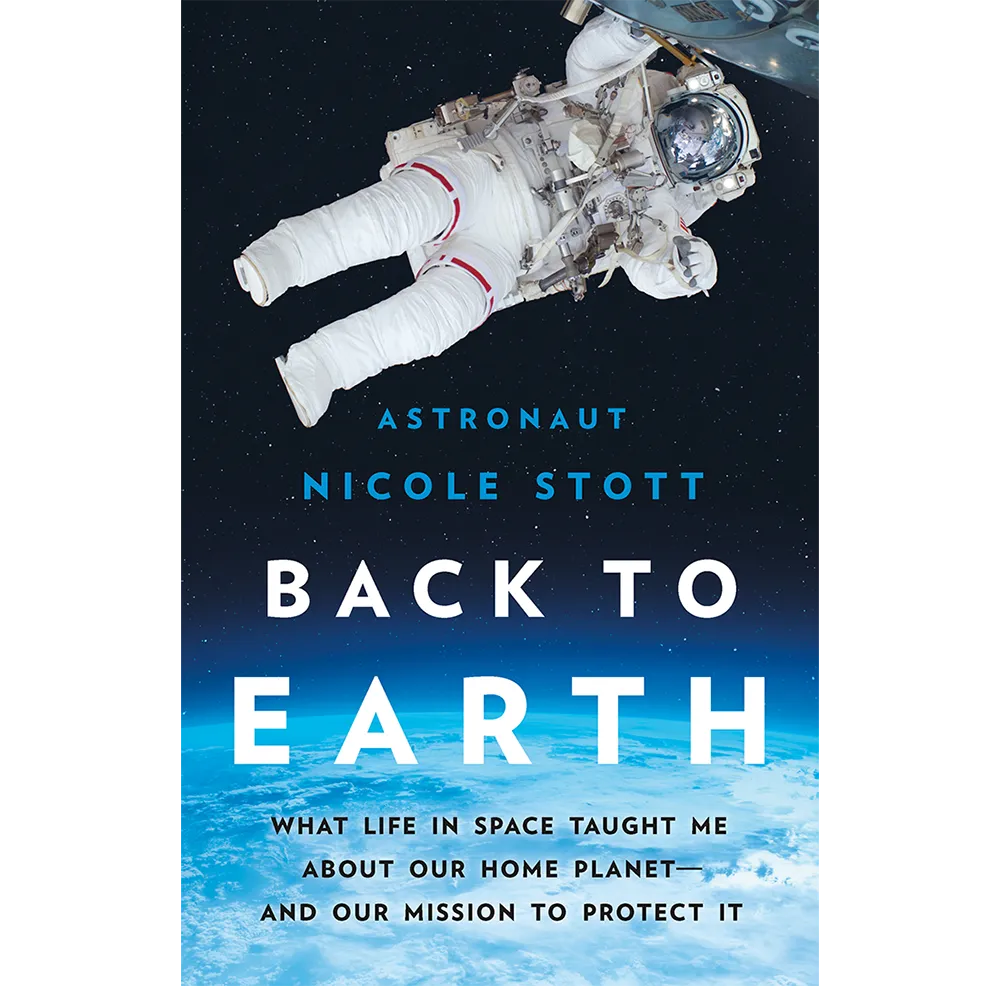
- Author Nicole Stott
- Publisher Seal Press
Seeing our home planet from space has given former astronaut Nicole Stott a unique perspective. She sees Earth as a perfect life support system, providing everything we need to survive and thrive with only our thin atmosphere shielding us from the lethal space beyond.
In Back To Earth, Stott likens our planet to a spaceship and calls for each of us to stop being mere passengers, but to take responsibility for our survival. As full crew members, our mission is to work together to keep our spaceship running smoothly.
Her book takes the work done on the ISS, and the protocols and training that its inhabitants use, as models for meeting the challenges of climate change on Earth.
The author also shows practical changes that we can make to our own lives, as individuals, that will improve the planet as a whole.
Both inspirational and down to earth, with a ‘can do’ attitude that is empowering, this is a hopeful and beautifully written call to roll up our sleeves and work together as crew mates on our shared spaceship Earth.
ReviewerJenny Winder is a freelance science writer, astronomer and broadcaster
22
Beyond

- Author Stephen Walker
- Publisher William Collins
Hollywood screenwriters often include a ‘save the cat’ scene early on, to give audiences empathy with their hero. Stephen Walker’s history of Yuri Gagarin’s spaceflight starts with a ‘save the dogs’ example.
Canine cosmonauts on a 1960 Vostok test flight touch down safely in Siberia, but the KGB had insisted on including a self-destruct device in case of a landing in the West. It activates anyway, and two rescuers draw lots for who disarms the bomb – both wish to try.
This sets the scene of what follows: brave people trying to accomplish great things despite the dysfunctional society they inhabit. The KGB had to be talked out of putting self-destruct devices on board human Vostoks too.
This is not a narrow biography of the straightforwardly heroic Gagarin, but tells the wider story behind his 106-minute flight, extending to his fellow cosmonauts as well as their American rivals. On average cosmonauts were a good 10 years younger than their astronaut equivalents, with much less flight experience.
The Soviet emphasis was on fitness, not flying ability; these first cosmonauts were more cargo than crew. The author joins the dots to the grim tally of test animals flown (and often sacrificed) on both sides of the Iron Curtain, preparing the way for human explorers.
A documentary maker, Walker returned to primary sources and living witnesses wherever possible. The result is a gripping story, rich in novelistic detail. Highly recommended.
Reviewer Sean Blair writes for the European Space Agency website
23
Space Shuttle: A Photographic Journey
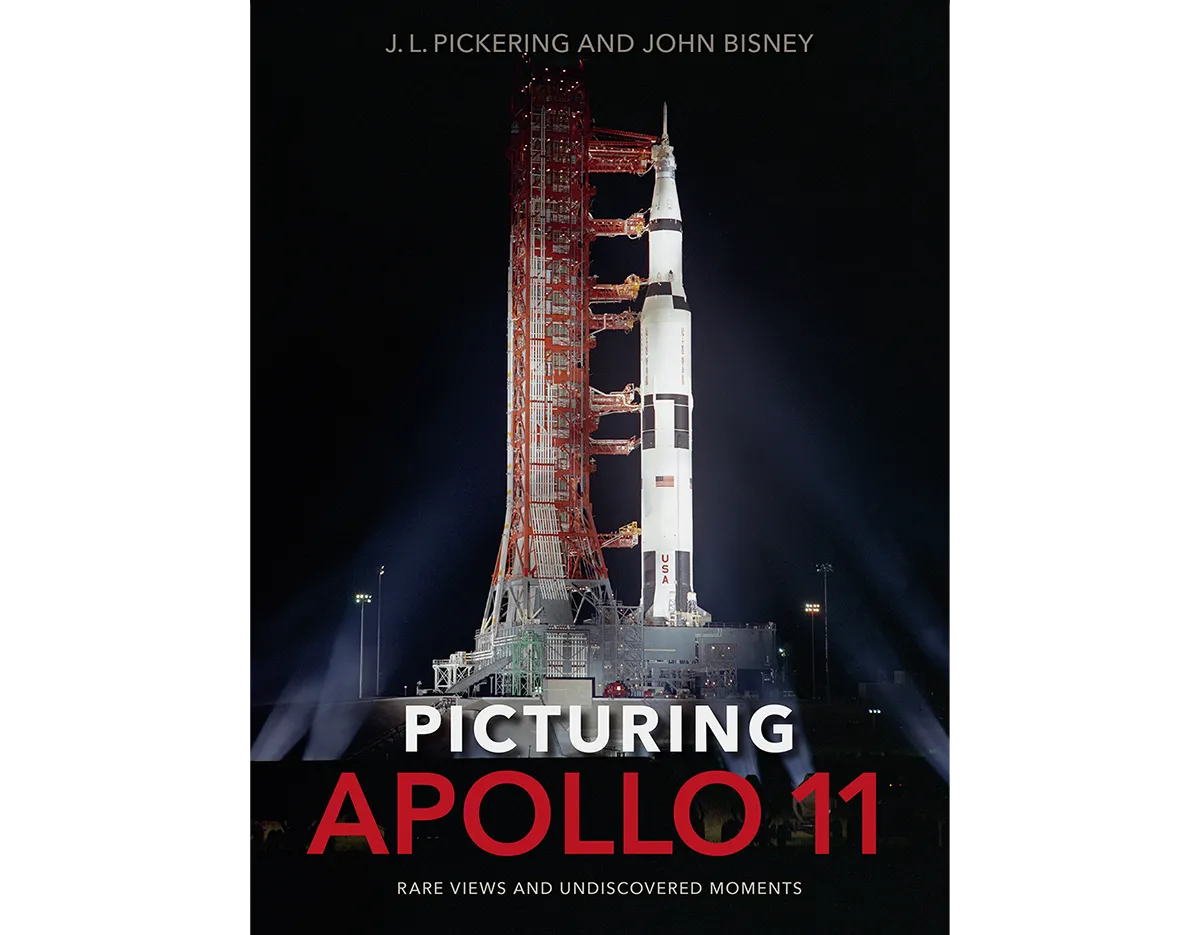
- Authors JL Pickering & John Bisney
- Publisher University Press of Florida
Historian JL Pickering and journalist John Bisney’s anthology of rare photographs, Picturing Apollo 11, honours the people who strove against all odds to land a man on the Moon. Only a handful of their chosen images are readily recognisable; most have not been seen before. The book covers January to August 1969, from crew selection to their emergence from quarantine onto the world stage. The authors avoid familiar images in favour of rarer ones, often quirky, including 7-year-old Andy Aldrin trying on his father’s helmet. The book conveys the sense of awe at Apollo’s monumental scale and the photographic clarity is profound.
Reviewer Ben Evans is the author of several books on human spaceflight and is a science and astronomy writer
24
Handprints on Hubble

- Author Kathryn D Sullivan
- Publisher MIT Press
Penned by America’s first woman spacewalker, Handprints on Hubble tells the story of Kathy Sullivan, whose career took her from a pressurised space suit to the highest altitude ever reached by the Space Shuttle. As one of the first women picked by NASA for astronaut training, her memoir mixes autobiography with a solid appreciation of the Hubble Space Telescope, arguably the most important science instrument ever placed into orbit. As a ringside spectator of Challenger, Sullivan’s memories are tinged by tragedy and she remained soberly aware that she might never return from a mission. Behind every scene Hubble itself looms large – “like a beautiful silver gift from Tiffany’s” – whose contribution to understanding our place in the cosmos needs no qualification.
ReviewerBen Evans is the author of several books on human spaceflight and is a science and astronomy writer
25
Space 2069
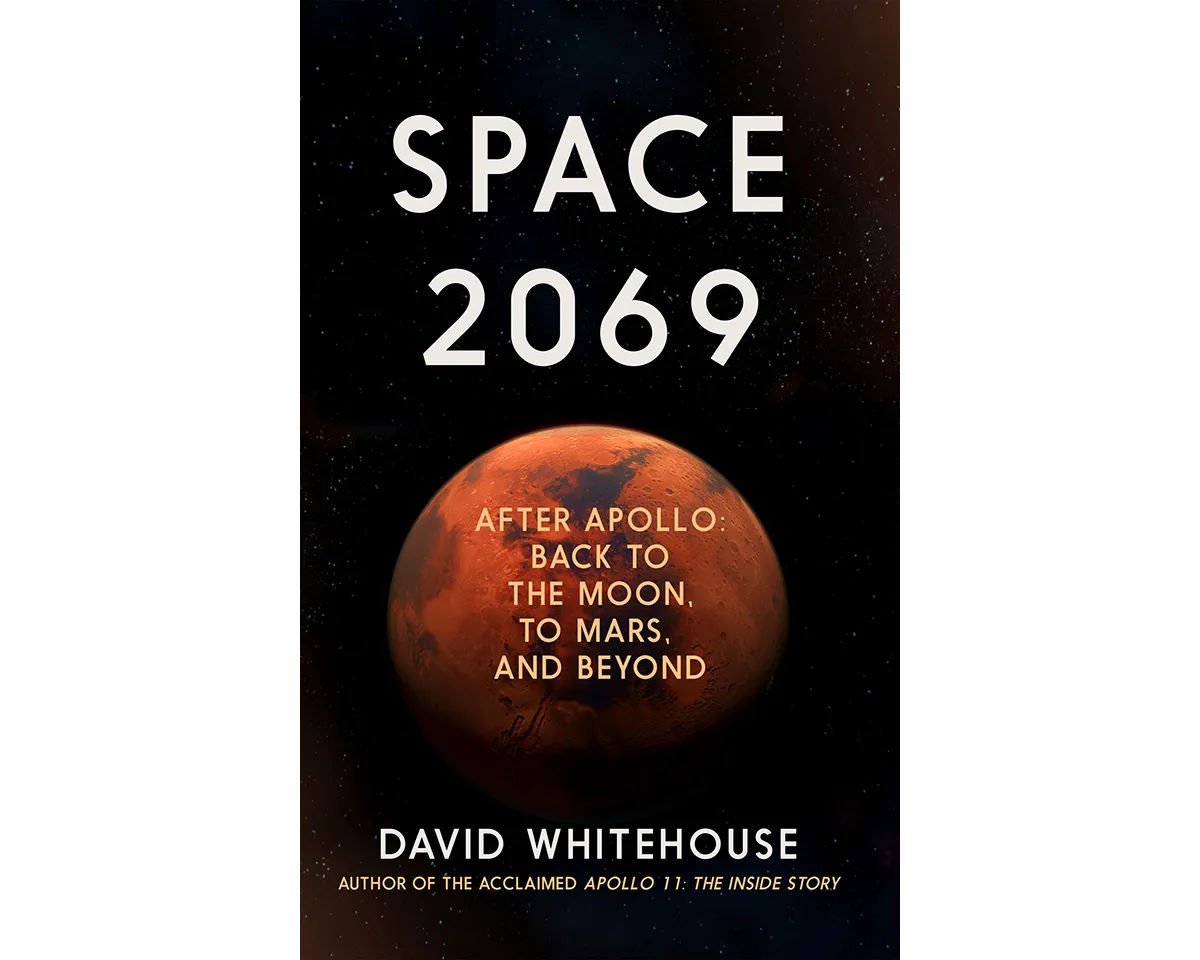
- Author David Whitehouse
- Publisher Icon Books
It is rare to read something that so closely mixes science fiction with reality, but Space 2069 does just that. From the pen of former BBC science correspondent David Whitehouse, this book affords us an intelligent portrait of where we may be in the next half-century: from an Antarctica-like set-up of international Moon bases to outposts on the Red Planet.
Whitehouse’s simple style draws on his own childhood aspirations and it is not hard to discern simmering frustrations as he ponders our lack of progress since 1969. His outline of 2069 – centenary events from ‘First Footprint Sanctuary’ at Tranquility Base, and colonies on Mars whose residents have never walked the Earth – is resoundingly optimistic, but still tainted by a dark thread of gloom.
However, after reading this book you will be left with a glimpse of a future that's far from utopian, but certainly offers a sense of realism for what the next 50 years might hold.
Reviewer Ben Evans is the author of several books on human spaceflight and is a science and astronomy writer
26
Shuttle, Houston
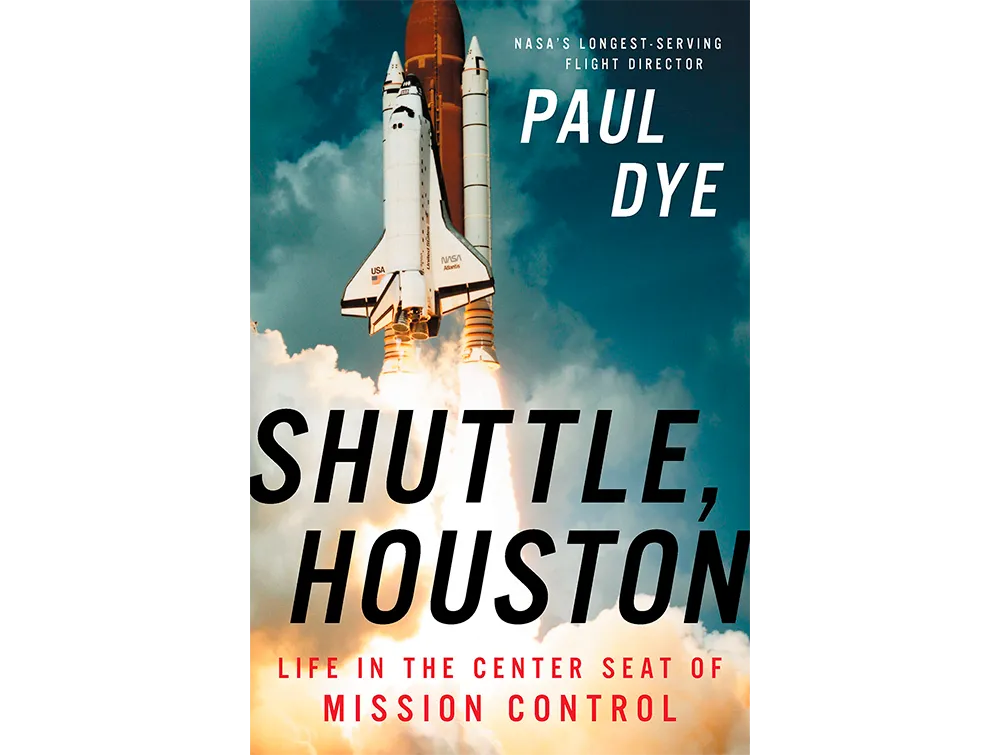
- Author Paul Dye
- Publisher Hachette
NASA’s Space Shuttle programme ran from 1981 to 2011, launching 135 missions, and during that time Paul Dye was its longest-serving flight director.
With a clear voice from the onset, Dye deftly crafts the story of his many years working on the Shuttle programme around a broader story of NASA at that time, including the design, planning and implementation of Shuttle missions to Spacelab, the Mir Space Station, the International Space Station and the Hubble Space Telescope.
Devoting whole chapters to spacecraft functionality and orbital mechanics, as well as stories of the training hours, routines and customs of the teams engaged in mission control, the book is somehow both referential and personal.
Packed with fascinating anecdotes from each mission, Dye attributes people, the expertise of engineers and the quick reaction times of teams as the real measure of success in his career, and the privilege he was afforded in being trained by the best.
Reviewer Niamh Shaw is an engineer, lecturer and science communicator
27
NASA Missions to Mars

- Author: Piers Bizony
- Publisher: Motorbooks International
In NASA Missions to Mars, Piers Bizony paints a beautiful portrait of this most Earth-like of worlds, capturing it through our past imaginations, our present knowledge and, tantalisingly, how it might become our next planetary home.
With a rousing introduction by A Man on the Moon’s Andrew Chaikin, the book traces humanity’s romance with Mars from Percival Lowell’s ‘canals’ to H.G. Wells’ monstrous tripods and Orson Welles’ notorious October 1938 radio broadcast. Supported by exquisite images, movie posters and photography, the book leads us through the realms of fantasy and science fiction into the stark realities of the Space Age and considers how each U.S.-led mission has gradually peeled back the Red Planet’s mysterious veneer.
Bizony shows us Mars as it truly is: windswept, dry and inhospitable, yet still harbouring clues of a wetter, life-nurturing past. And though the search for life remains a central tenet of this book, NASA Missions to Mars also has the feel of an unrequited love story. For as Chaikin lyrically waxes in his intro, as a youngster he fell in love with the world next door. As did we all.
Reviewer: Ben Evans is a science writer and author of several books on human spaceflight.
Best books about history of astronomy
28
Vera Rubin: A Life

Authors Jacqueline Mitton, Simon Mitton
Publisher Harvard University Press
Until Vera Rubin, no one was really sure about dark matter. It was a theory, but without her work, few were truly convinced by it. That all changed when Vera Rubin’s work on galaxies showed dark matter was needed to explain what she was observing.
Rubin is a fascinating character, not only for her great scientific achievements but for the example she set in how to tackle gender inequality in science. There are some lovely excerpts of letters in the book, showing her using logic and her position to speak up for equality in a way that is both polite and direct.
This book is hugely detailed, both in its use of primary sources and in the explanations of the science involved. This is a great introduction to an important woman and her work.
Reviewer Emily Winterburn is a science historian and author of The Quiet Revolution of Caroline Herschel
29
No Shadow of a Doubt
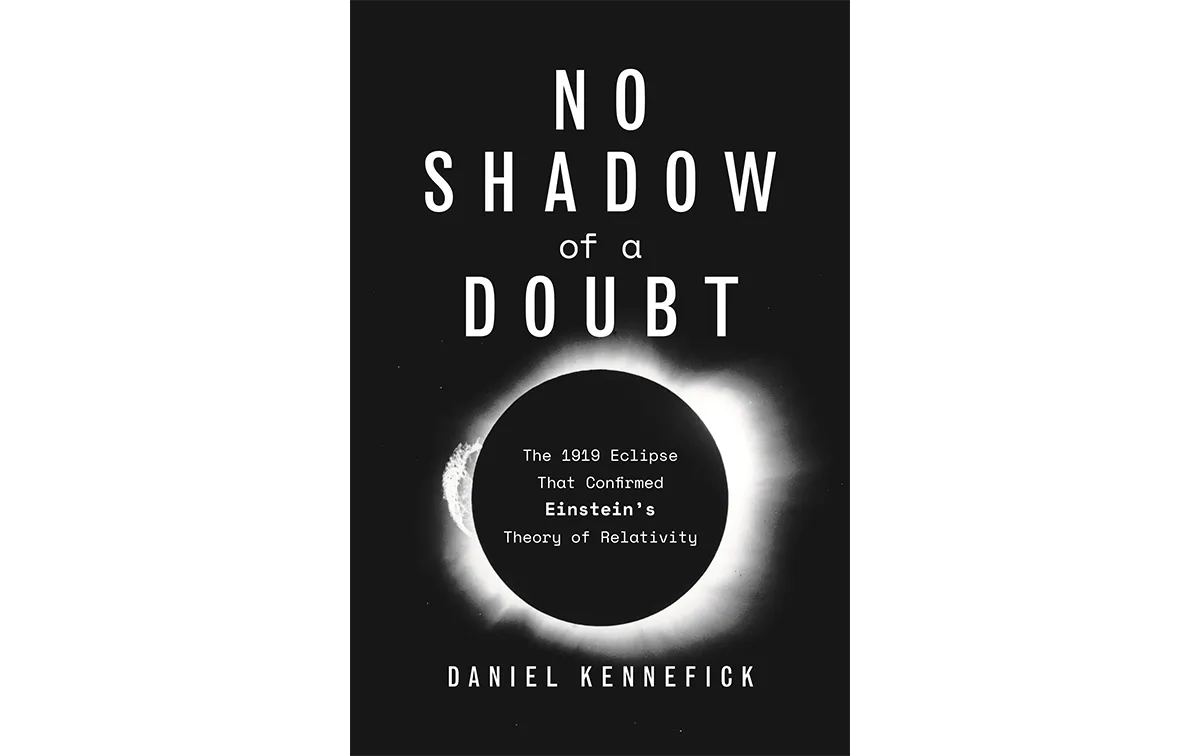
- Author Daniel Kennefick
- Publisher Princeton
At 2.13 GMT on 29th May 2019 it was exactly 100 years since Arthur Eddington and Frank Dyson stood before their telescopes ready to capture images of an eclipse they hoped would confirm Albert Einstein’s general theory of relativity. The book tells of the lead up to the eclipse expeditions, details the expeditions themselves and looks at the aftermath: how Eddington and Dyson’s results were received at the time and the discussions regarding their validity up until the present day. It also discusses the role of this expedition in making Albert Einstein a household name. This is a fascinating book, full of insight into the relationship between theory and experimental proof.
ReviewerDr Emily Winterburn is the author of The Stargazer’s Guide: How to Read our Night Sky.
30
Zwicky: The outcast genius who unmasked the Universe
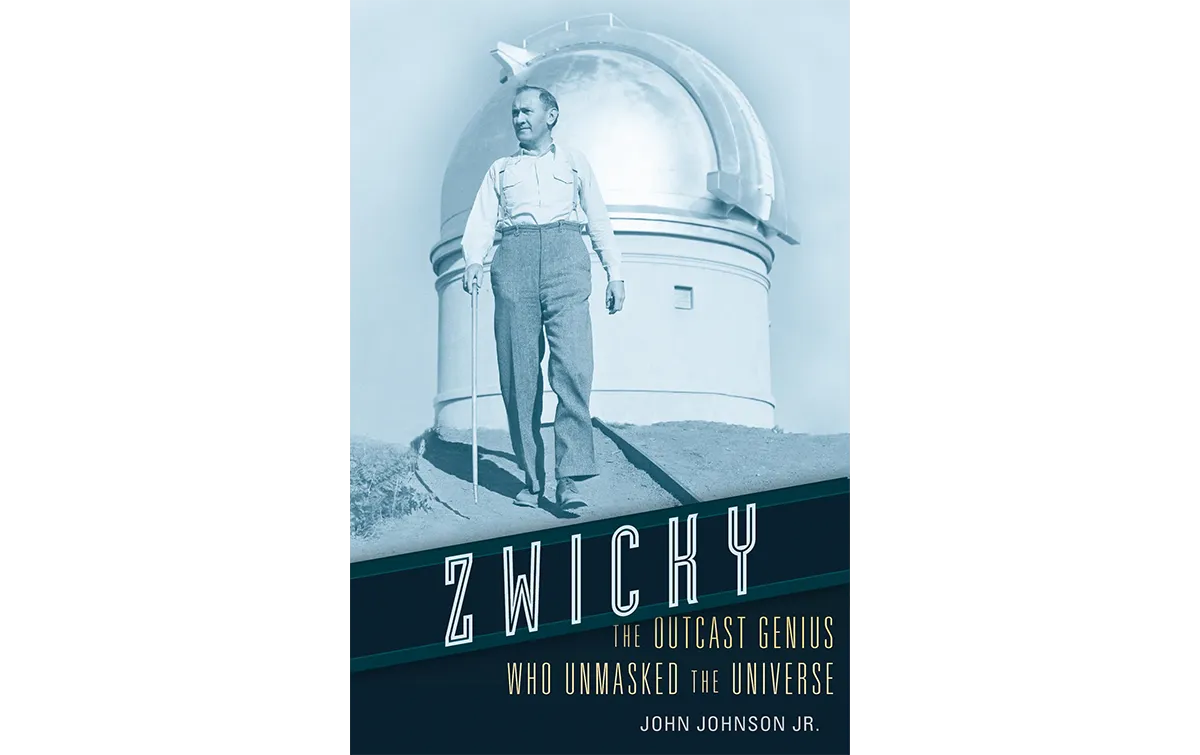
- Author John Johnson Jr
- Publisher Harvard University Press
Fritz Zwicky is a name most astronomers learn early their careers, due to both his scientific achievements and his combative personality. This biography explores the life of this world-renowned physicist. The book spans an eventful period in world history that formed the backdrop to Zwicky’s astronomy research along with his contributions to the US war effort and rocketry. It includes details of many of Zwicky’s personal encounters, putting his various feuds and confrontations in context. It's very interesting to read and provides a fascinating insight into a rich, complicated character and his engagement with the world he was part of.
Reviewer Dr Chris North is Odgen science lecturer and Science & Technologies Facilities Council public engagement fellow at Cardiff University
Best books about planets
31
Planets

Author Emily Drabek Maunder
Publisher National Maritime Museum
- Buy now from Royal Observatory Greenwich
In Planets, Dr Emily Drabek-Maunder takes us on a whistle-stop tour of our Solar System, outlines what we know about how the planets form, introduces us to the search for planets around other stars and takes a brief look at the prospect of life beyond planet Earth.
The discussion of our planetary neighbours largely focuses on their size, atmosphere, orbital period and temperature. Characteristics that we find are key to the search for exoplanets and life are detailed in the chapters that follow.
In only 110 pages, the book was never going to be able to provide a comprehensive overview of all our knowledge acquired to date, but then that was never its aim: as with other titles in the new Royal Observatory Illuminates series, Planets provides a brief, accessible introduction to the subject, and it does so very nicely. It is well written, with an easy to read style that reminds me of a Royal Institute Christmas lecture.
Figures, photographic plates and footnotes all serve to support the text throughout the book, and a very helpful glossary is provided at the end. As a concise introduction, Planets manages to cover an impressive amount and will undoubtedly leave the reader keen to learn more.
Reviewer Dr Penny Wozniakiewicz is a lecturer in space science at the University of Kent
32
The Secret Lives of Planets

- Author Paul Murdin
- Publisher Hodder & Stoughton
Paul Murdin manages to compress billions of years of Solar System history into fewer than 300 pages, as well as providing a timeline and glossary of both our nearest and furthest neighbours. The details of each object’s classification, rotation, diameter and surface temperatures are given in helpful boxouts so the reader doesn’t get lost in all the information. The Secret Lives of Planets aims to be “a user’s guide to the Solar System”, but it also turns out to be an inspiration to look at the Solar System as a long cosmic journey, and find our place in it.
Reviewer Sandra Kropa is a science journalist and writer
33
Mars: A Journey of Discovery

- Author Rod Pyle
- Publisher Andre Deutsch
Author and NASA consultant Rod Pyle has written a lot about the history of space exploration, but this book is a masterpiece. Pyle writes about the mission scientists and the emotions felt as they witnessed the first ever landing on the Red Planet. This book not only illustrates the brightest moments from different Mars missions, but also talks about failures and lost spacecraft, spelling out the history of our species’ curiosity with Mars and explorations of its surface. It's an excellent read, both for those who know a lot about Mars and those who have only recently become fascinated by the Red Planet.
ReviewerSandra Kropa is a science journalist and writer
34
Saturn
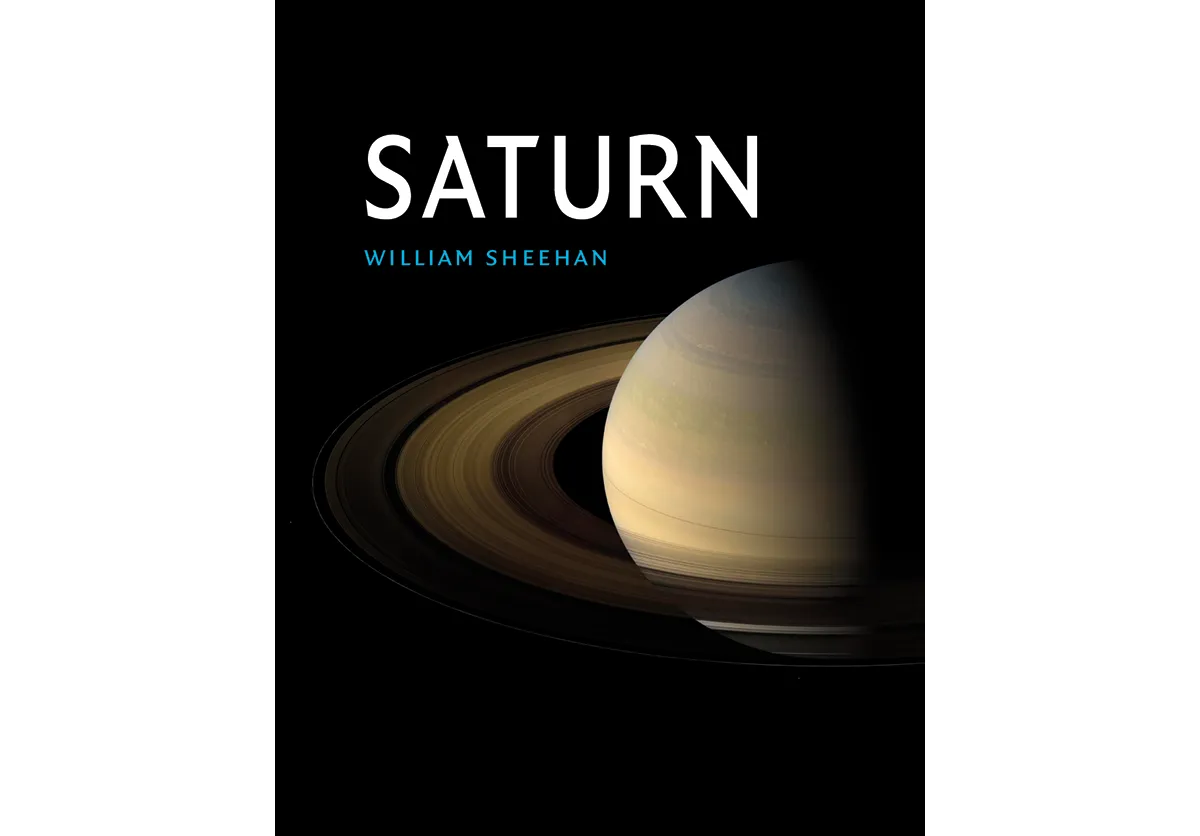
- Author William Sheehan
- Publisher Reaktion Books
'Saturn' is a detailed exploration of the most well-known of the ringed planets in our Solar System. It is an amazing account of how much we can learn from so little; how, over time, new things slowly reveal themselves, and how many questions we have yet to answer about this infamous giant world. As well as drawings from early observations of the planet, the book features some spectacular images taken by the Cassini orbiter and other missions, which combine with Sheehan’s writing to show how our understanding of Saturn has gradually deepened over the centuries. The book concludes with a detailed guide to observing Saturn in the hope that further monitoring, by both amateur and professional astronomers, will help to reveal the planet’s many remaining secrets.
ReviewerHannah Wakeford is an astronomer who studies the atmospheres of exoplanets at Space Telescope Science Institute
35
Once upon a time I lived on Mars
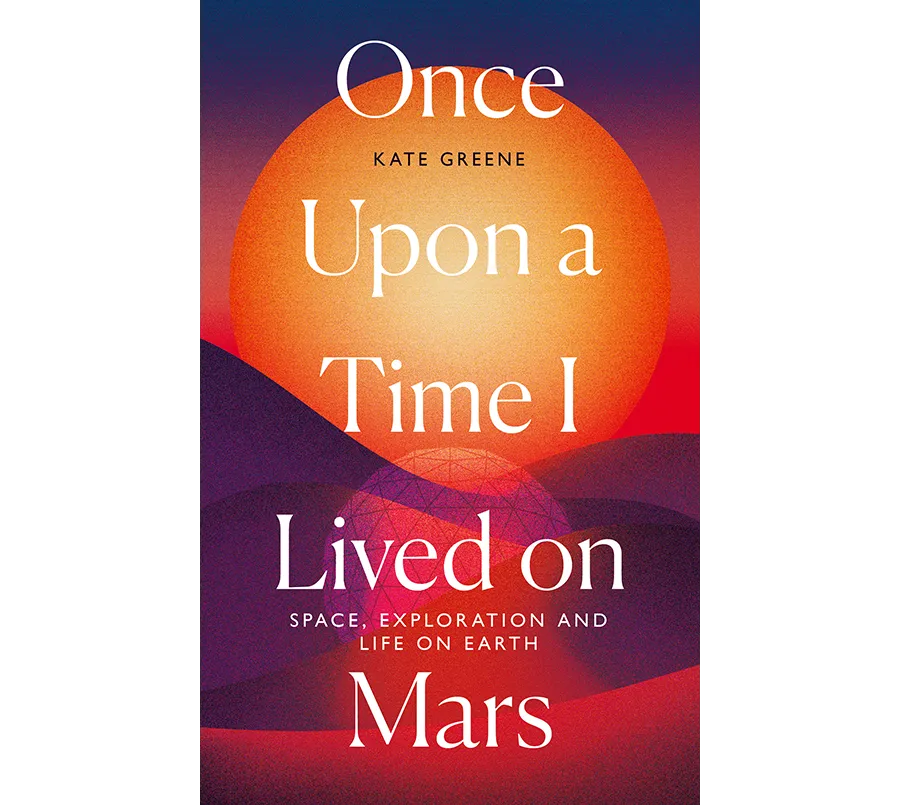
- Author Kate Greene
- Publisher Icon Books
HI-SEAS (Hawaii Space Exploration Analog and Simulation) is a geodesic dome isolated on the slopes of Mauna Loa, a volcano on Hawaii’s Big Island. From 2013 to 2018 it was used by NASA for six ‘analog missions’ – field tests in locations that have physical similarities to space environments – to Mars. Crews of ‘almost astronauts’ remained in complete isolation for up to a year, in conditions as close as possible to those expected of a small crew on the Red Planet.
This book follows the first of those missions, which took place over four months in 2013 and which studied, among other things, the role that food resources would play on a long-term mission.
The crew of six were cut off from the world, with a 20-minute delay imposed on communications with Mission Control, no social media and limited email contact with family.
They ate a combination of ready-made meals and ones that they cooked for themselves, carried out experiments and other studies, and went outside on EVAs in mock spacesuits
on the Mars-like slopes of the volcano.
Greene uses various aspects of the mission to explore wider issues in our lives, such as the role food plays, the problems of boredom and communication, the part of the human guinea pig and the effects of isolation.
It is a timely book that resonates strongly when many of us have been forced into solitary isolation or been cooped up with family for extended periods due to COVID-19 lockdowns – the things we miss, the minor niggles that can so easily build into major conflict when living in close proximity and privacy is at a premium.
ReviewerJenny Winder is a freelance science writer, astronomer and broadcaster
36
Fire & Ice
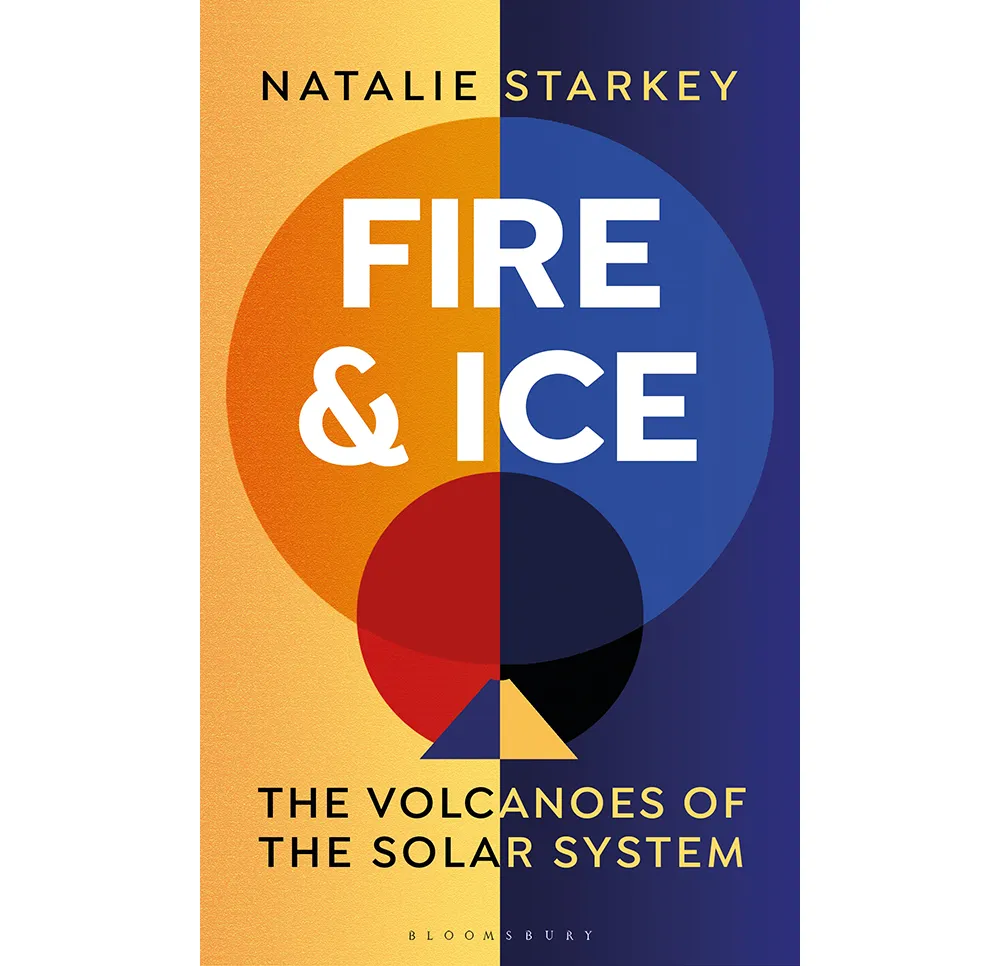
- Author Natalie Starkey
- Publisher Bloomsbury
Fire and Ice: the Volcanoes of the Solar System is a masterful geology lesson disguised in the excitement of fire, ice and alien worlds.
When you think of a volcano, you are probably thinking of something you made at school: a tall cone-shaped structure with bubbling ‘lava’ cascading down the side. In this assumption you would be right, but also simultaneously completely wrong.
Fire and Ice will introduce you to a whole range of volcanoes, from those forming under pressure at the bottom of the ocean, to the moving wonder of hot spots from the core of Earth forming island chains in the middle of nowhere, to those that are pouring out blue flames – and those are just on our planet.
Beyond Earth, you will learn about the largest volcano in the Solar System (Olympus Mons), the cryovolcanoes made of solid ice spraying jets of salty water tens of kilometres into space, and how a world can be stretched so much it has tides of molten rock that are five times as high as the ocean tides on Earth.
This is highly recommended for anyone who has ever been fascinated by the glow of a volcano, or wondered if there is life ‘out there’.
ReviewerDr Hannah Wakeford is an astrophysicist at the University of Bristol who studies exoplanets using space telescopes
Best astronomy books for kids
37
Dr Maggie’s Grand Tour of the Solar System
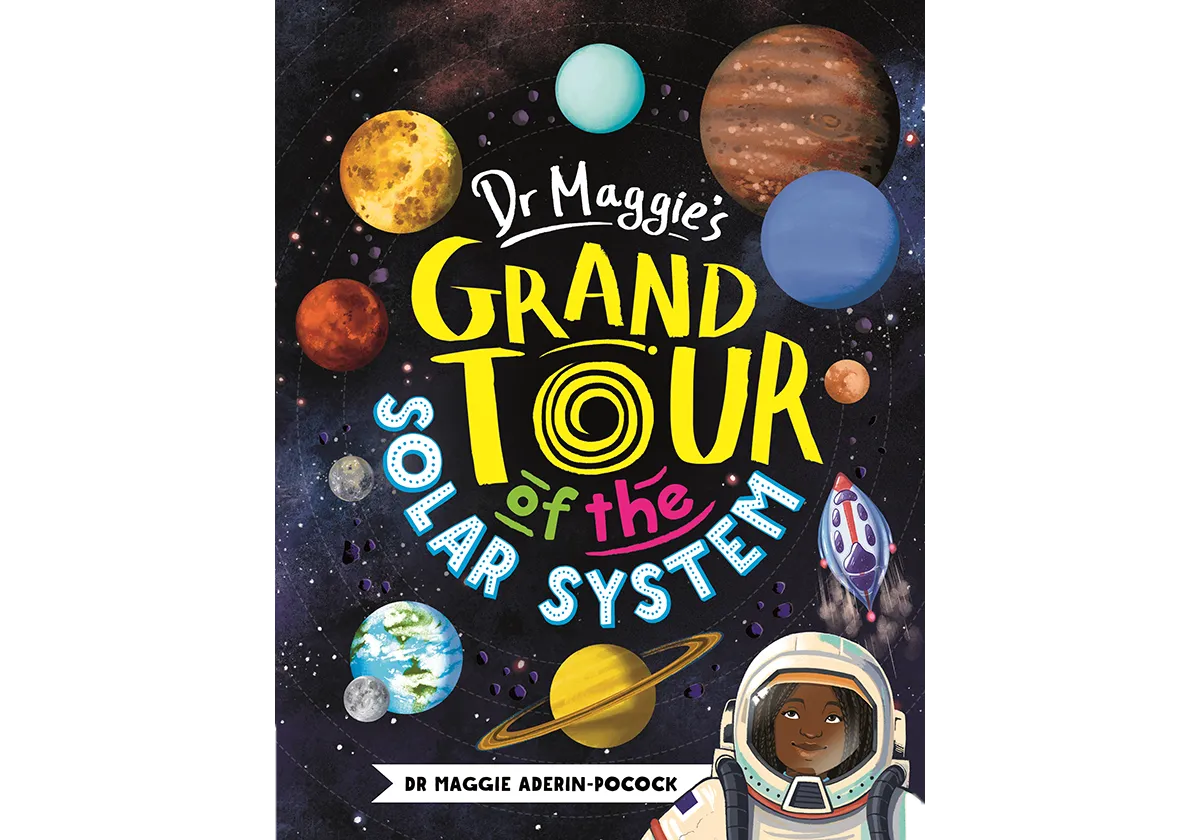
- Author Dr Maggie Aderin-Pocock
- Publisher Buster Books
If you fancy snowboarding off Pluto’s slopes and frozen mountains, experiencing ‘diamond’ rain on Uranus or taking a 20-year plane journey from the Moon to the Sun, you could take a family trip around the Solar System with space scientist and The Sky at Night presenter Dr Maggie Aderin-Pocock. In her book, aimed at older pre-teen children, a cartoonified Dr Maggie takes readers on an informative journey. It’s beautifully designed, with an appealing layout and plenty of illustrations. Packing in the entirety of the Solar System, its planets, objects, exploratory missions and history in 120 pages aimed at children is no easy task. Aderin-Pocock has made a valiant effort to do so.
Reviewer Shaoni Bhattacharya is a science writer and journalist
38
Curious Cosmic Compendium
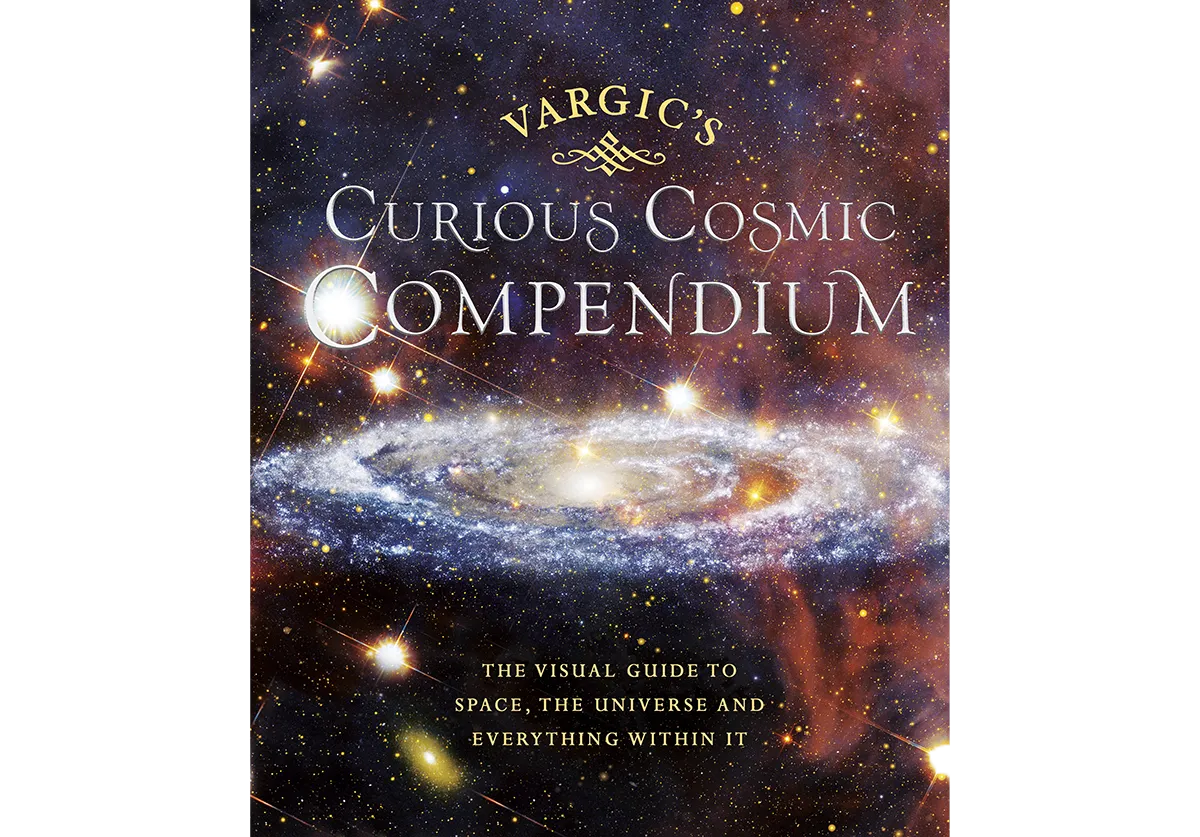
- Author Martin Vargic
- Publisher Michael Joseph
Which is the biggest and the most massive star in the Universe? Where is it located and when was it born? All the answers to these questions and many more, plus maps of places of universal importance, can be found in this Curious Cosmic Compendium. The author, artist and internet sensation Martin Vargic displays the history and wonders of the Universe in the typically creative way that brought his Miscellany of Curious Maps and Map of the Internet such praise. In more than 100 pages filled with facts and illustrations he takes the reader on a journey through the history of the cosmos.
Reviewer Sandra Kropa is a science journalist and writer
39
The Mysteries of the Universe

- Author Will Gater
- Publisher DK Children
Do judge a book by its cover: this one is as gorgeous as it looks. Not only that, it contains the full glory of the cosmos in a language that’s simple and engaging enough for an eight year-old.
Although The Mysteries of the Universe is aimed at children, it really is a treat for all ages. Visually stunning, with a fabulous selection of space photos, artworks and illustrations, it is also all-encompassing in its astronomy.
We start our adventure gazing at the sky on Earth, and from here the book sweeps seamlessly outwards: to the Moon, the inner and outer planets, right to the Oort Cloud, with everything in between. From there the Universe unfolds: we see nebulae, black holes and star-forming nurseries. We leave the Milky Way and whizz past the Large and Small Magellanic Clouds, Stephan’s Quintet; past spiral, elliptical and lenticular galaxies and far back to the distant early Universe.
While life on Earth may be challenging, this book goes a long way to inspiring the next generation and showing them just how big and wonderful the world of astronomy can be.
Reviewer Shaoni Bhattacharya is a science writer and journalist
40
The Squirrel That Watched The Stars
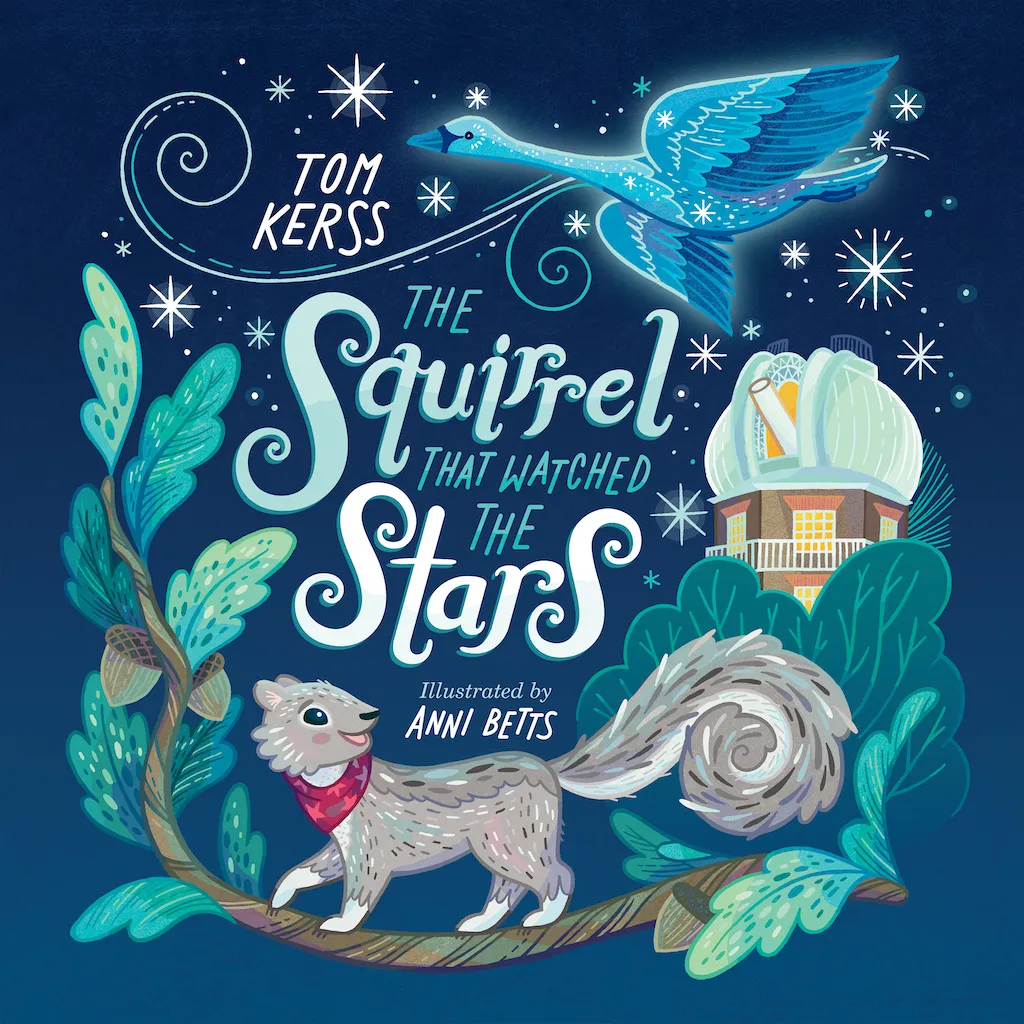
- Authors: Tom Kerss; Anni Betts
- Publisher: Stargazing London
For most of us, our introduction to astronomy comes as children, gazing up at the stars and wondering just what those bright specks in the night sky are. This sense of curiosity and wonder is at the heart of this children’s book by astronomer and writer Tom Kerss.
As a narrative poem it tells the story of a squirrel who looks up at the stars from his home in London’s Greenwich Park. Down from the heavens comes Cygnus the swan, who gives the squirrel and the reader a lesson in stellar science.
We learn there are more stars than can be counted, that stars are born in gas clouds, that they are different colours and that our very own Sun is a star.
The story is beautifully told in a simple poetic style, capturing the awe felt by a tiny creature like a squirrel – or indeed a human – when confronted by the cosmos. Anni Betts’ accompanying artwork is wonderful and really comes to life when depicting our companion Cygnus and other glittering constellations.
A short epilogue reiterates the science we’ve learned in simple language, and there’s a call to action too, inviting the reader find Cygnus in the night sky for themselves.
This is a captivating children’s book and a great introduction to astronomy, while its subject matter and soothing rhyme scheme make for a good night-time story.
But the biggest praise I can give is to repeat the words of my two-year-old, who at the book’s close simply looked up at me and said: “Again!”
Reviewer: Iain Todd is BBC Sky at Night Magazine’s Staff Writer
Did we miss any of your favourite books? Let us know by emailing us at contactus@skyatnightmagazine.com or via Facebook, Instagram and Twitter.